January 28, 2023
Today in MSFS I’m checking out the Cessna L-19 “Bird Dog”, starting off at the Bien Hoa Air Base in Vietnam.
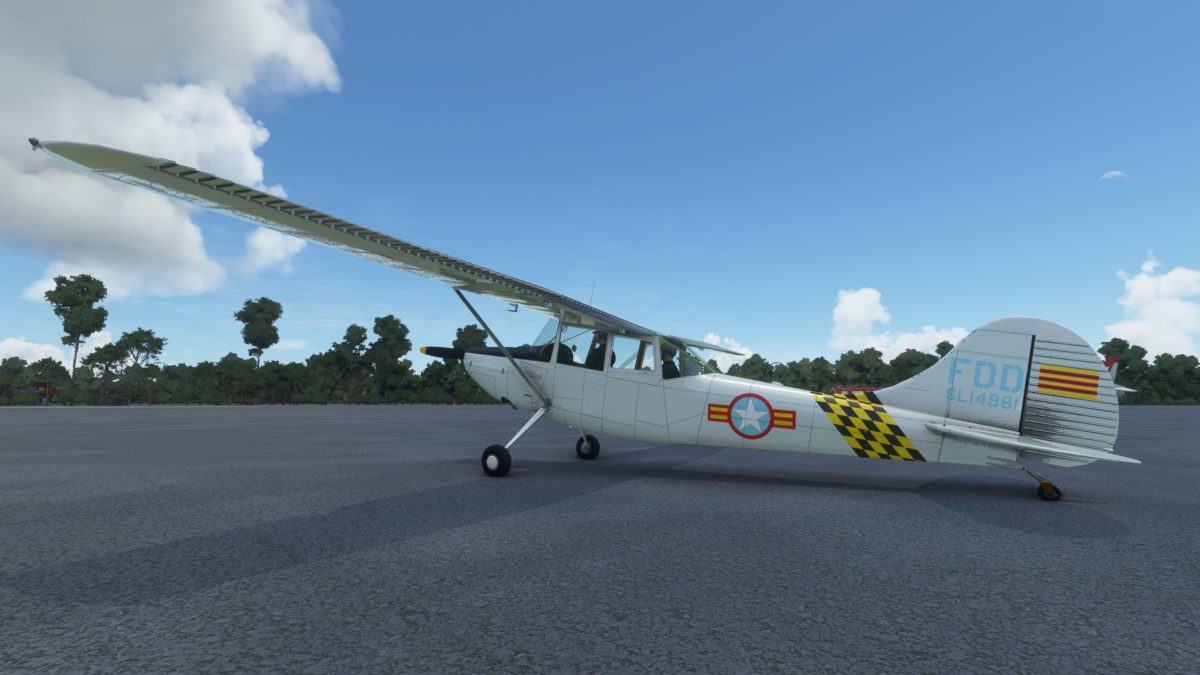
The L-19 was introduced in 1950 as a light, 2-seat observation, artillery spotting, and liaison airplane for the Army after the Air Force split away on its own.
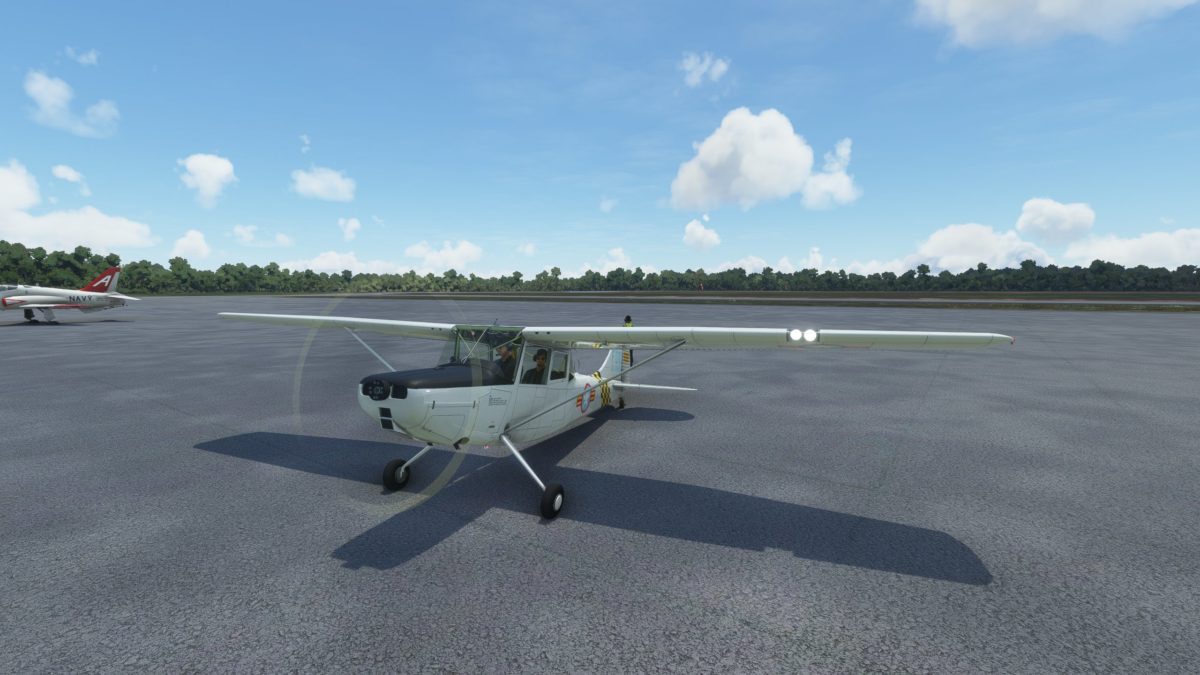
The L-19 is similar is aerodynamic design to the Cessna 172, which came out just a few years later. But it rests on a tailwheel, and its occupants sit one in front and one in back, like in a Piper Cub, as opposed to next to each other (tandem).
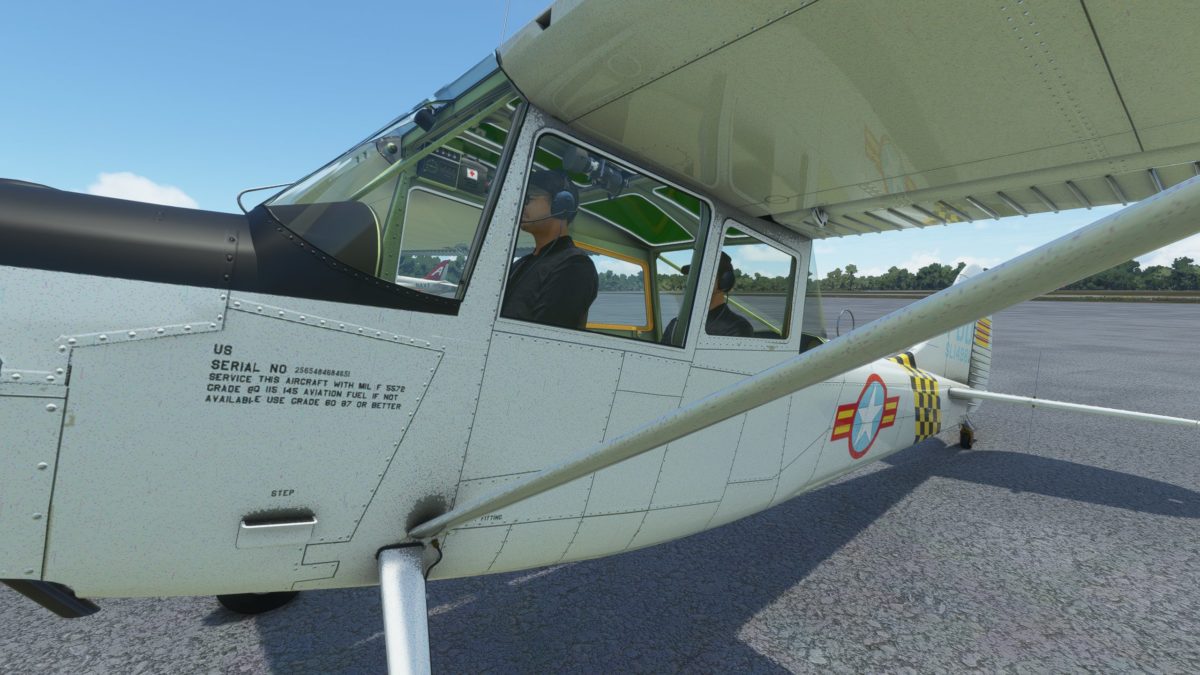
It also, like most military aircraft, has a stick instead of yoke, and the power controls are on the left side. The instruments still aren’t laid out in a standardized format yet. Like the 172 and Cub, it has a fixed pitch propeller, so no worrying about any “blue knob”.
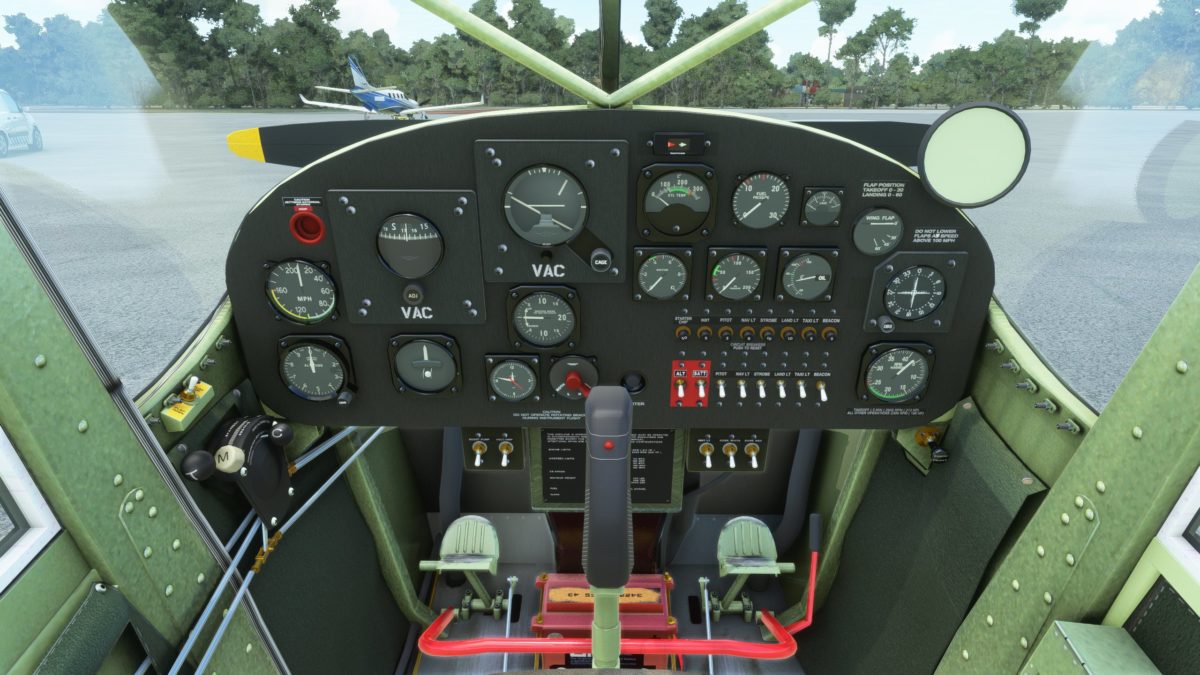
The left, above the door, you have your radio and your switch between fuel tanks.
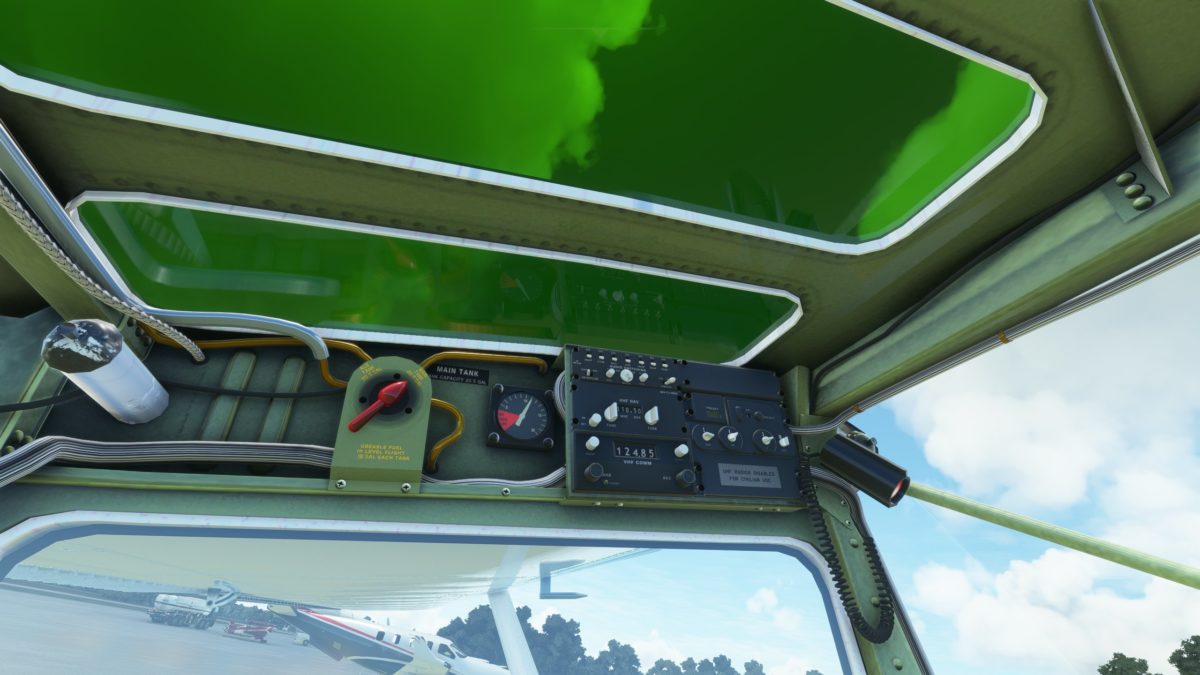
To the right there’s a civilian transponder, another gadget (a military transponder?) and the gauge for your second fuel tank. Hopefully we won’t need the first aid kit.
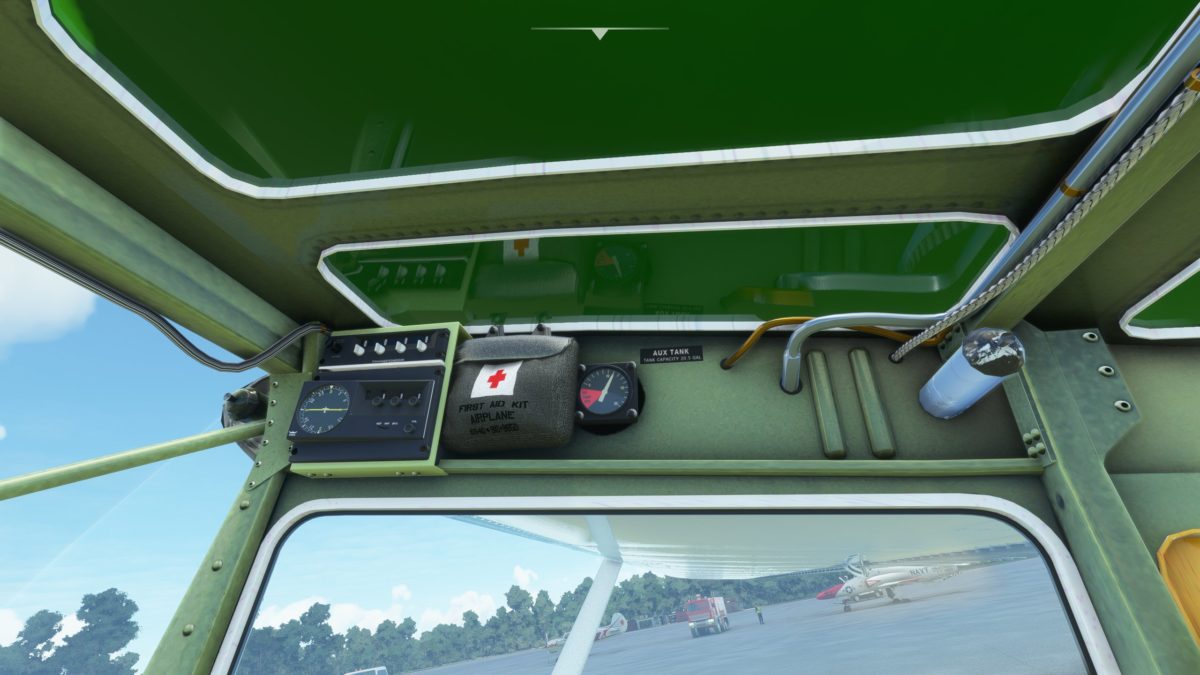
Even though it’s a tailwheeler, the angle isn’t too steep, so it’s not hard to look up and over the nose when taxiing. But you still have to be gentle on the breaks, or you’ll nose right over and that’s the end of your trip.
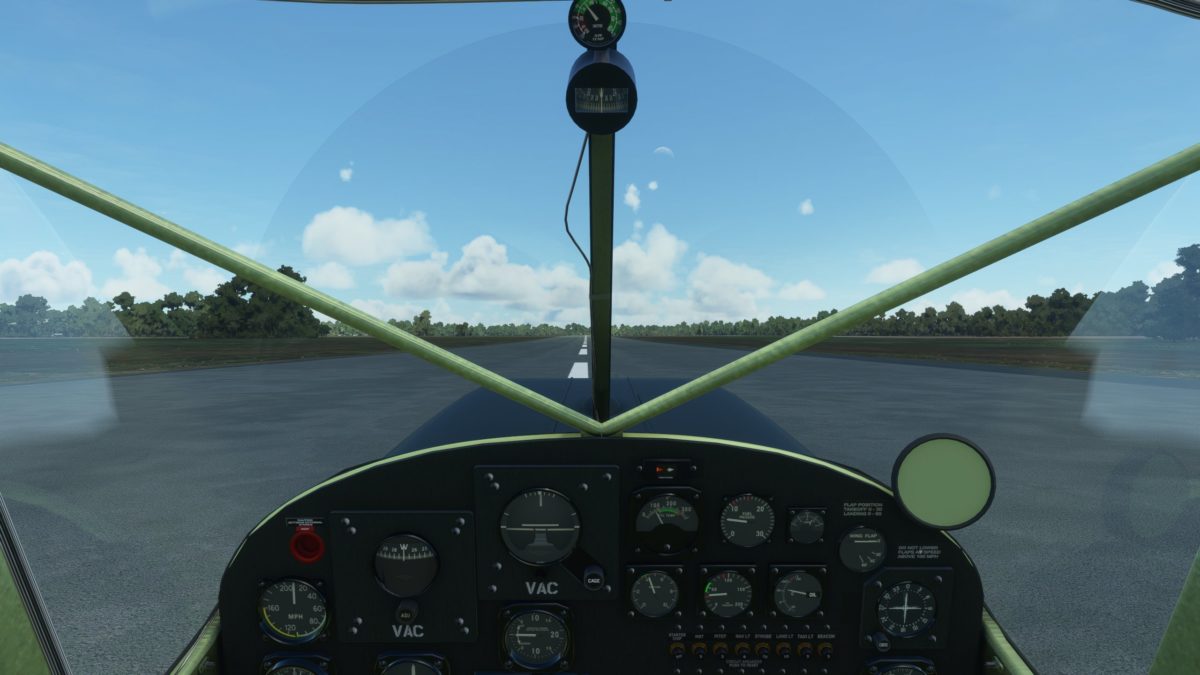
The aircraft today is painted in the livery of the South Vietnamese Air Force (RVNAF). There’s a story behind that which I’ll explain in a bit. In fact, there are a lot of interesting stories about the L-19, which has a lot more colorful past than you might realize.
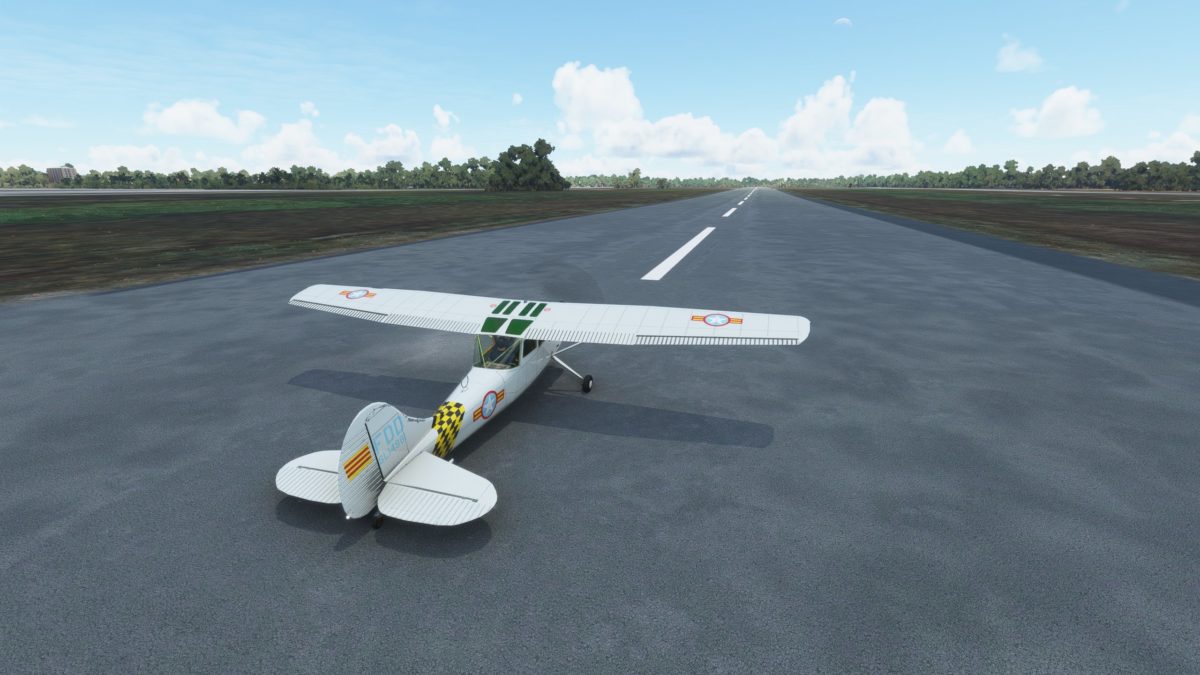
I’m taking off from Bien Hoa Air Base, just northeast of Saigon, which during the Vietnam War was a major US air base.
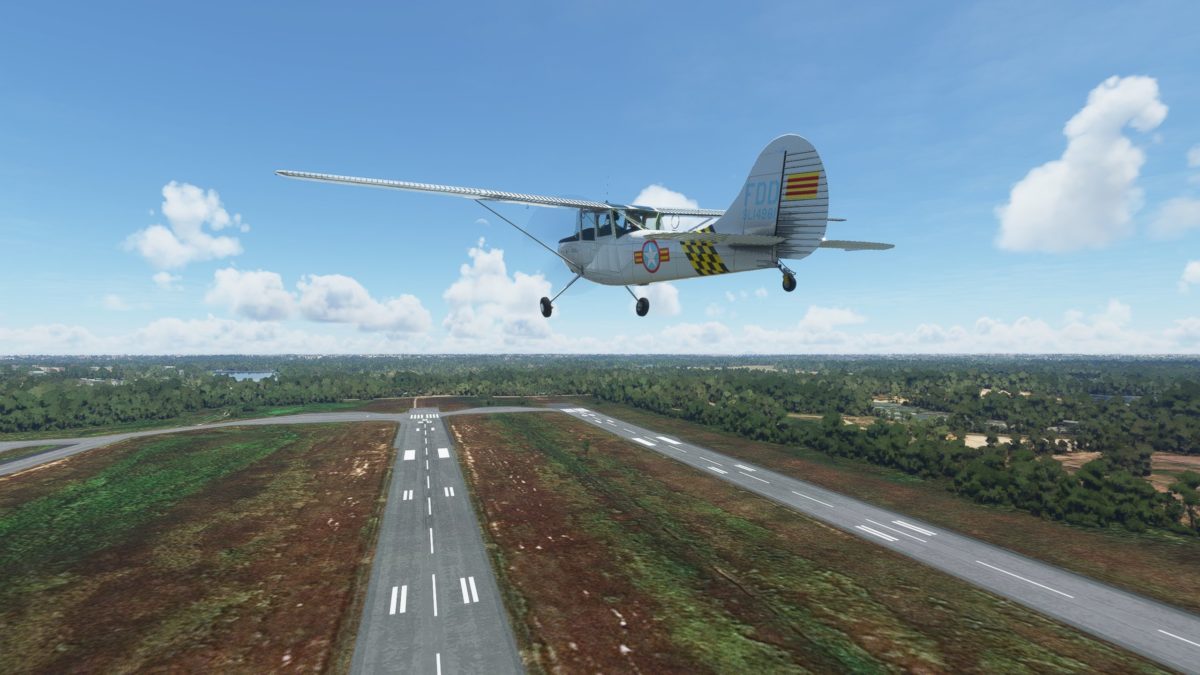
At the time, Bien Hoa had over 20,000 personnel and hosted over 500 aircraft of all kinds. The Viet Cong launched major attacks on it several times, including during the 1968 Tet Offensive.
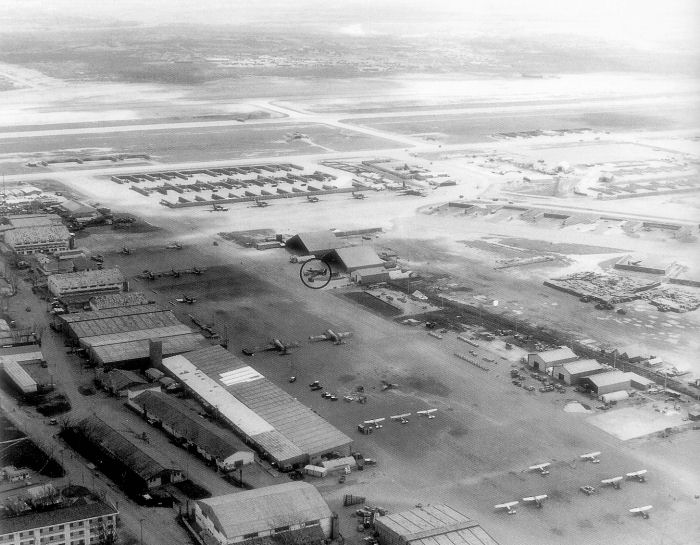
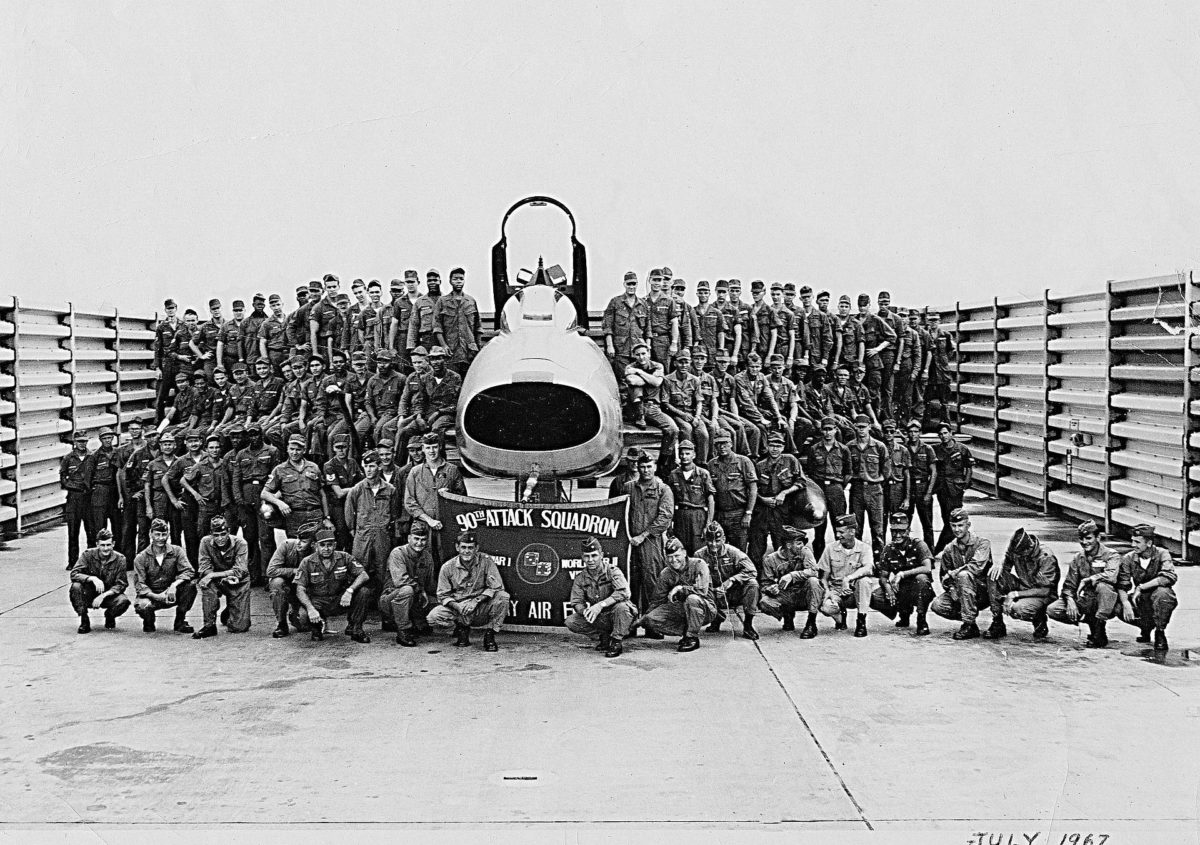
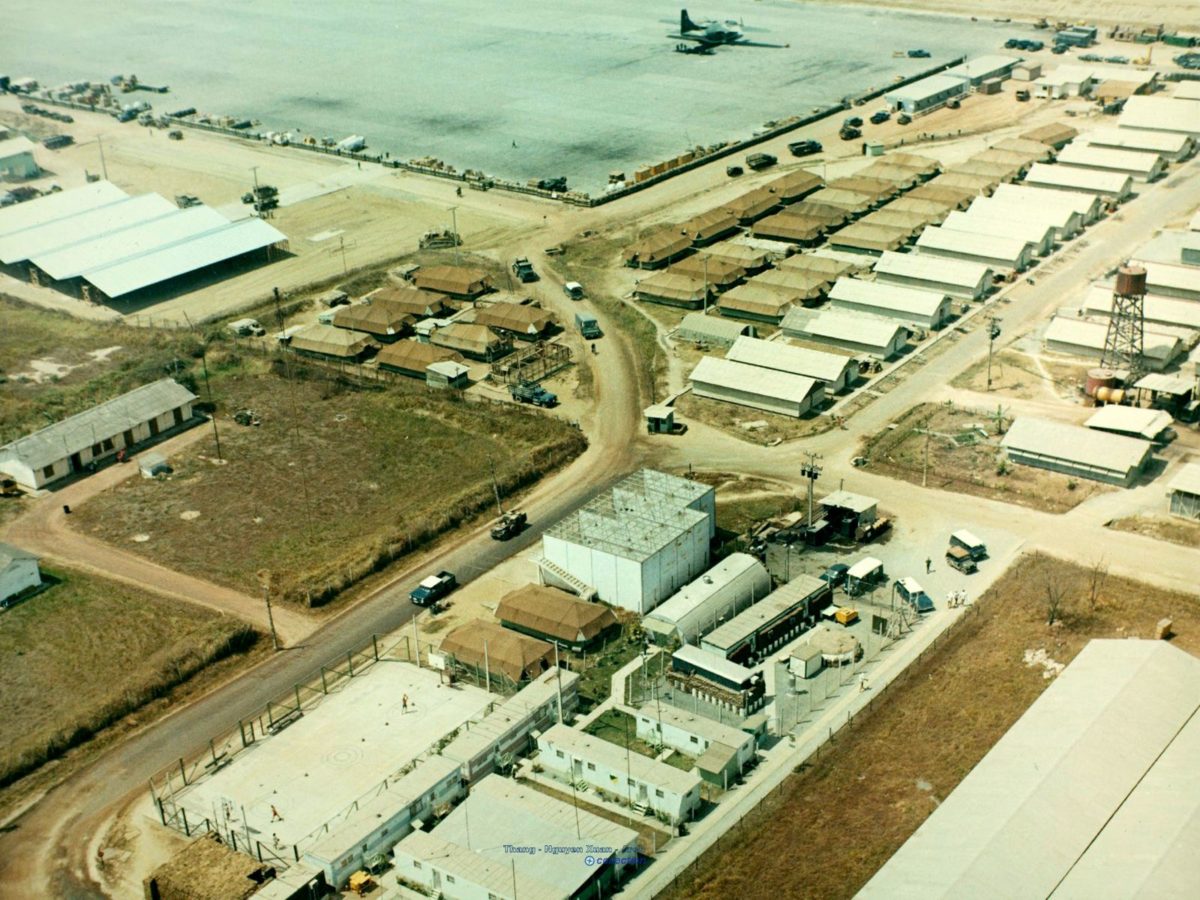
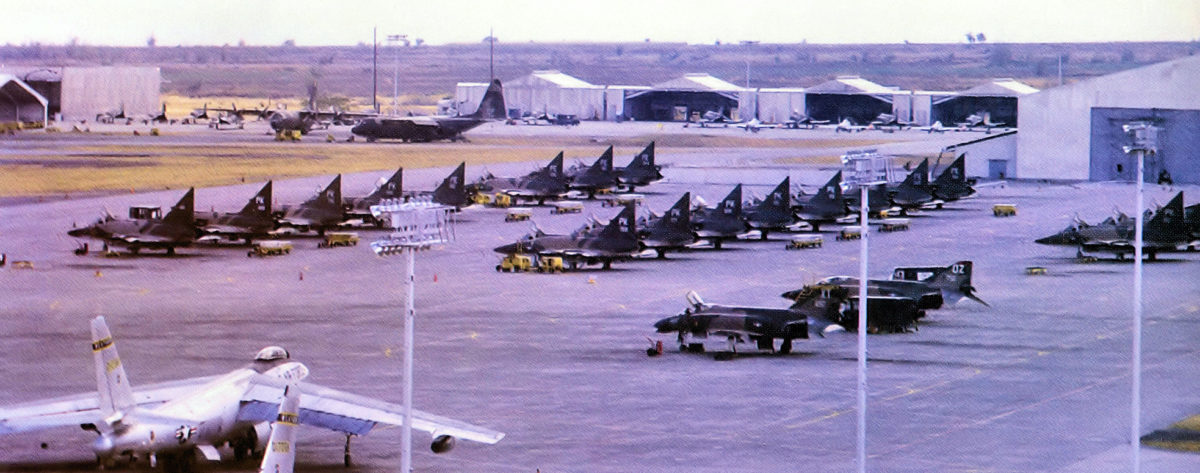
It’s still an air base, and the two 10,000-foot runways are in use, but much of the base has since shrunk and been reclaimed by nature and local residents.
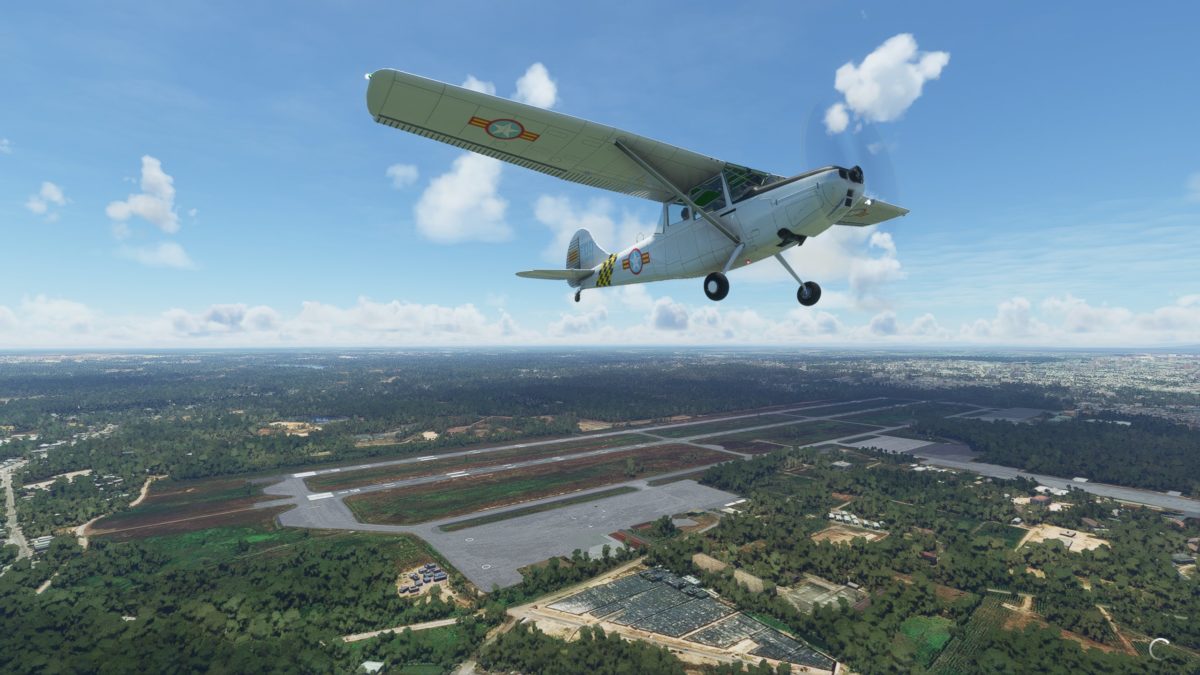
I’m flying southeast at around 1,800 feet, over the Dong Nai river towards Saigon. Bien Hoa itself is now the fifth largest city in Vietnam, with over 1.2 million people.
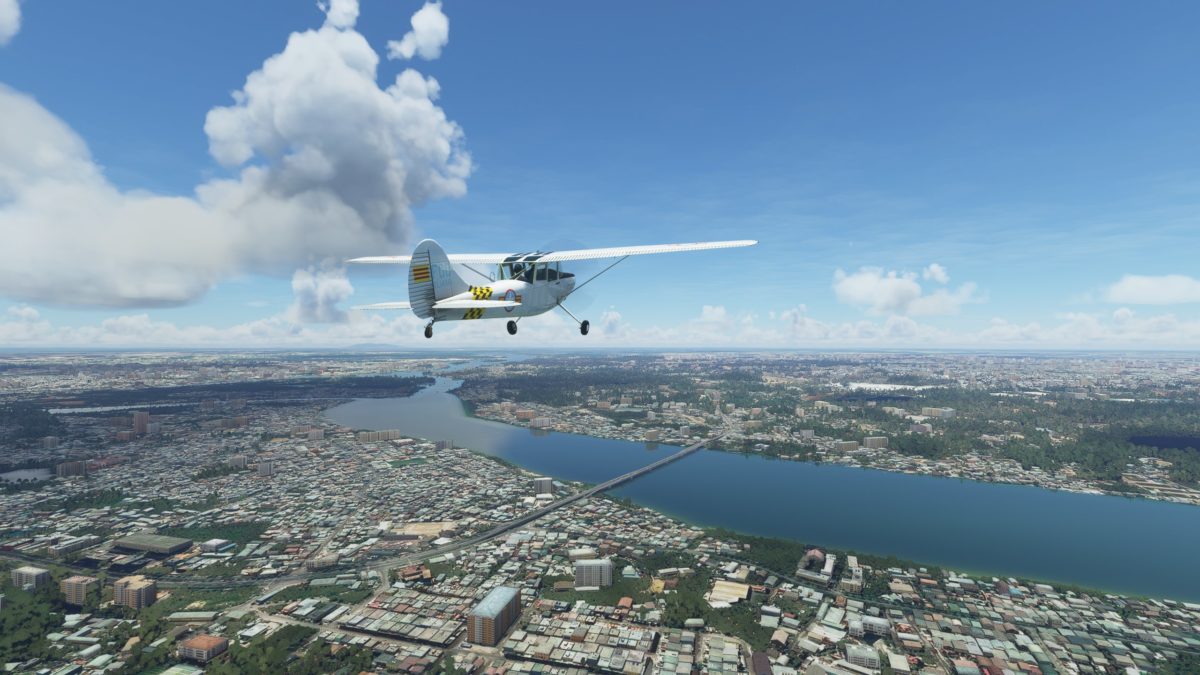
Saigon was the capital of South Vietnam. Renamed Ho Chi Minh City after the war, it’s still the largest city in the country, with over 8 million people.
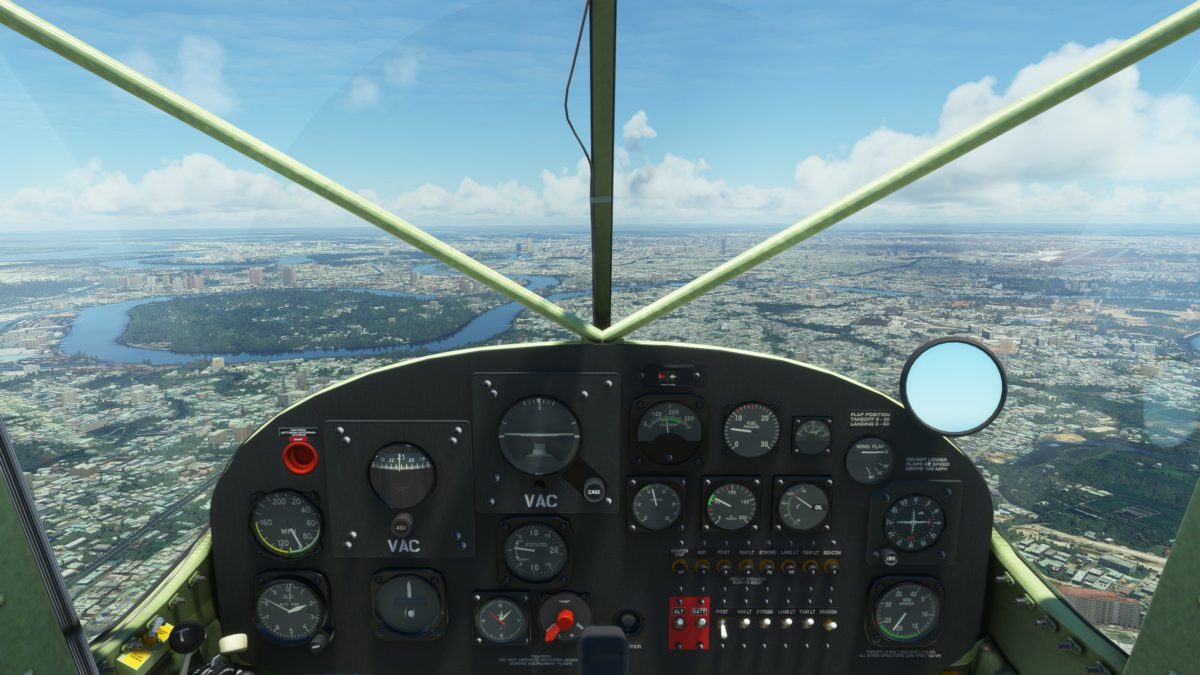
There’s Tan Son Nhat International Airport, off to my right. Created in the 1930s, it now handles over 10 million passengers per year and is ridiculously over-capacity.
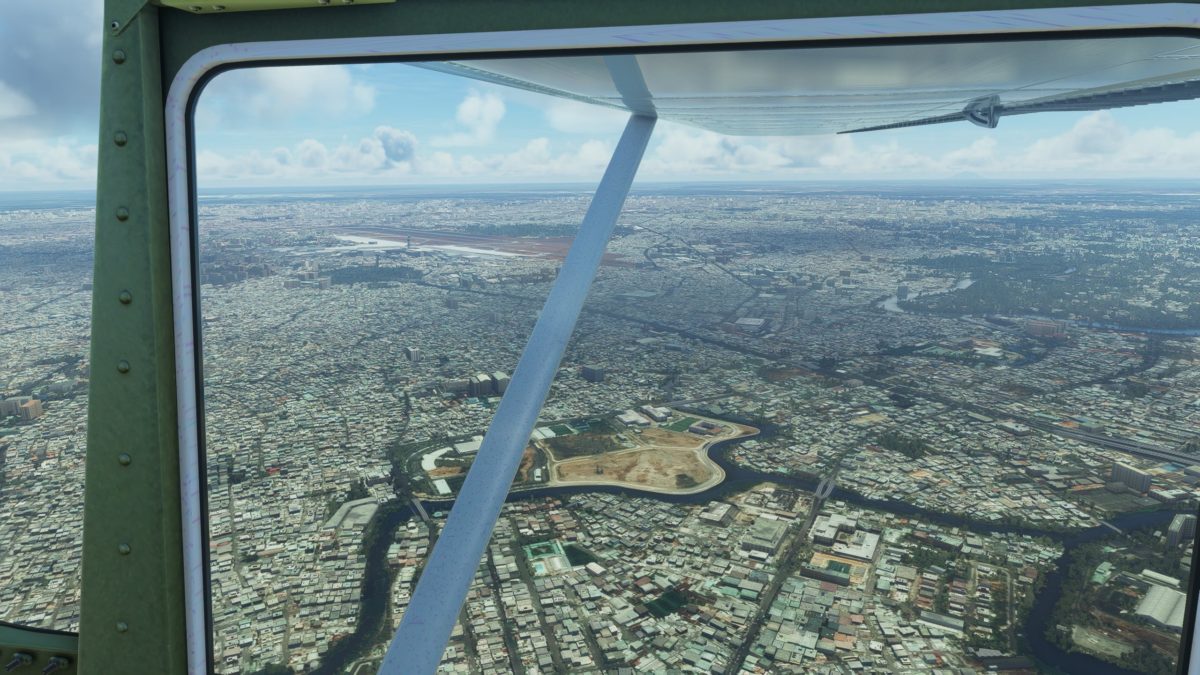
The building below me, in the middle of the green park, is South Vietnam’s former Presidential Palace. When I was there in 2001, I took a fascinating tour. The push-pins in the operations room maps downstairs hadn’t been touched since its capture in 1975.
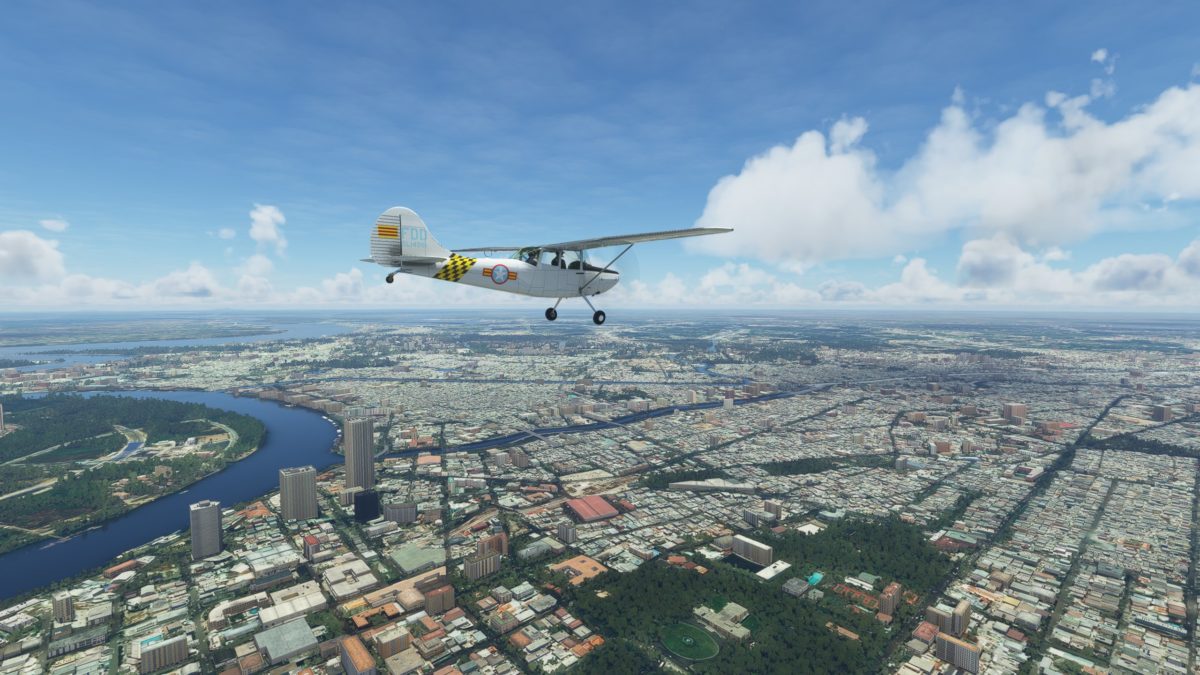
You can get some idea of the huge scale of a low-rise city of 8 million people. The area below me, Cholon (which literally means “big market”) is the city’s Chinese district, considered the largest Chinatown in the world.
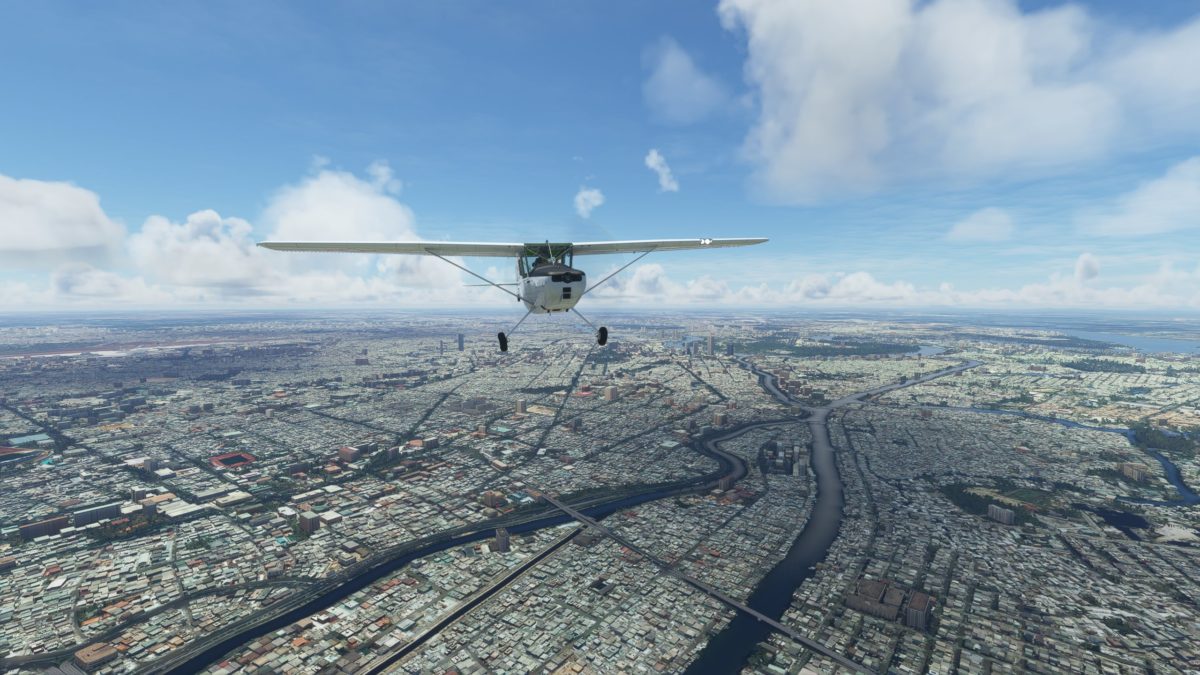
But I’m leaving Saigon to the south now, to perform what would have been a typical mission for the L-19, scouting over the hotly contested Mekong River Delta.
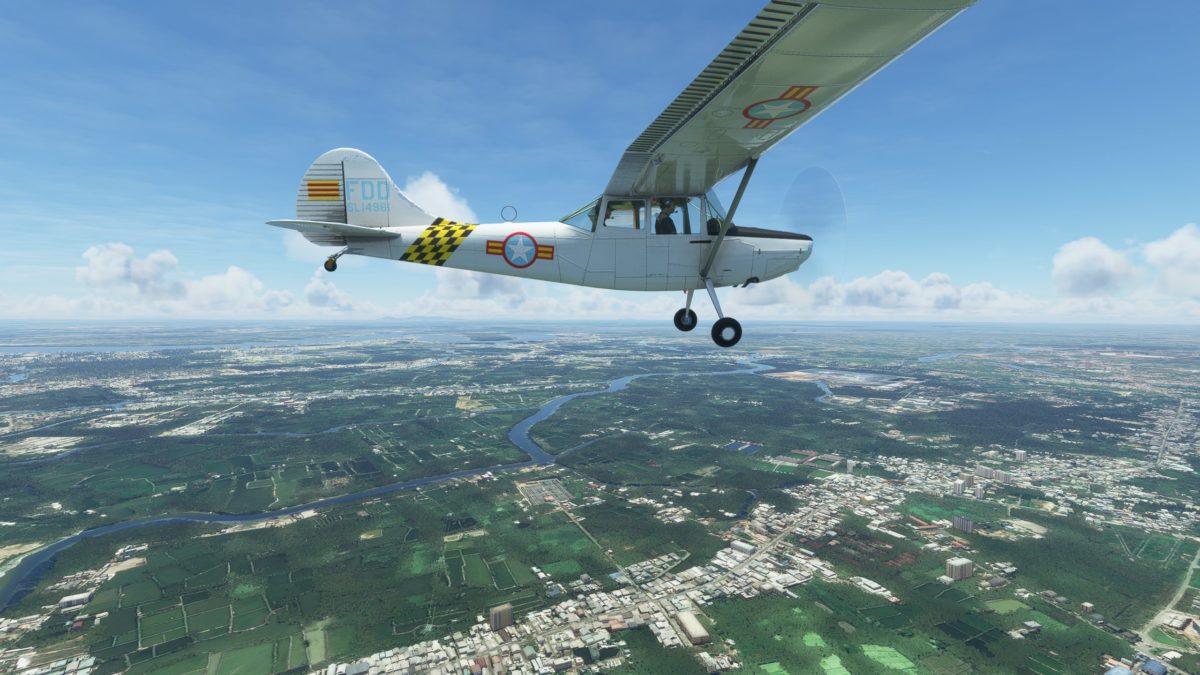
Checking with my observer here in the back seat, to make sure he’s good to go. He also has a stick and some basic controls, and can fly the plane (because of weight and balance issues, if you’re flying solo, you typically have to fly from the back seat).
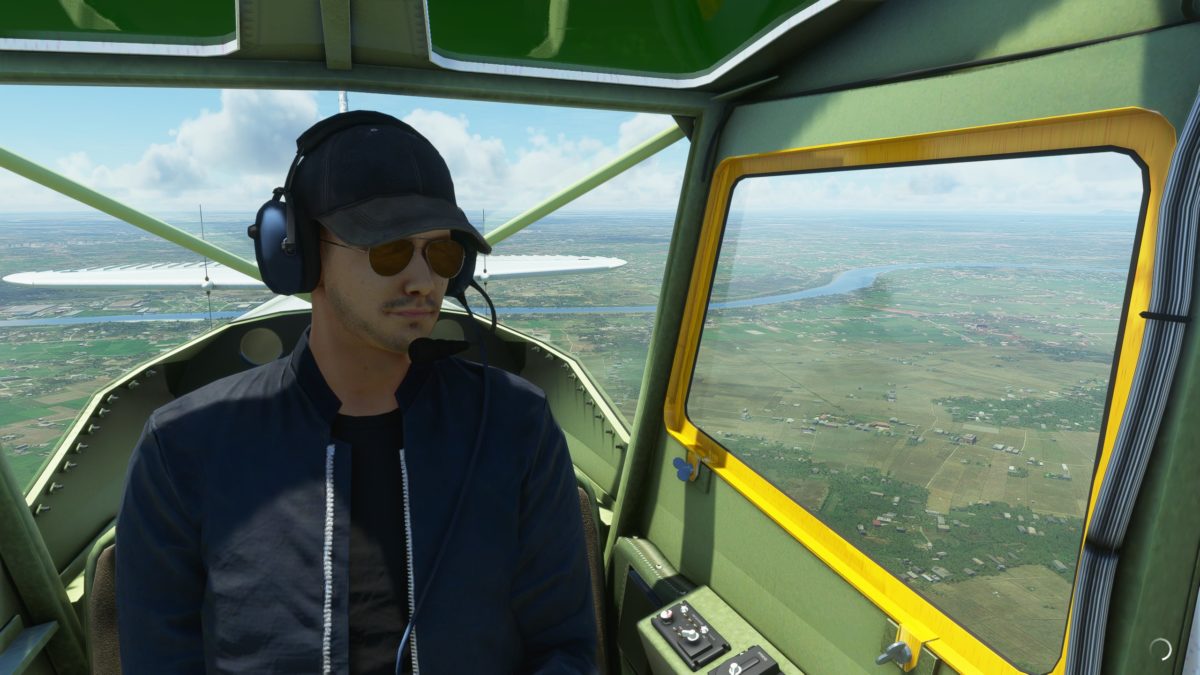
Charlie could be anywhere out there.
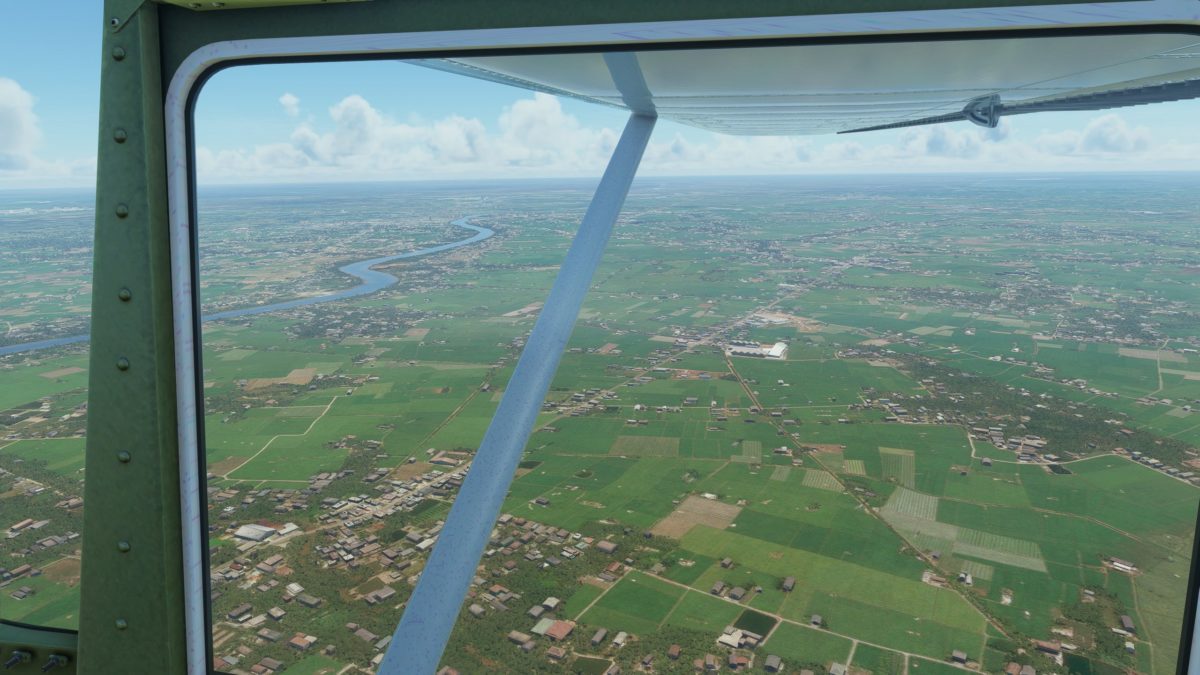
About 1/2 hour from take off, we’re finally coming up on My Tho, on the northern edge of the Mekong Delta.
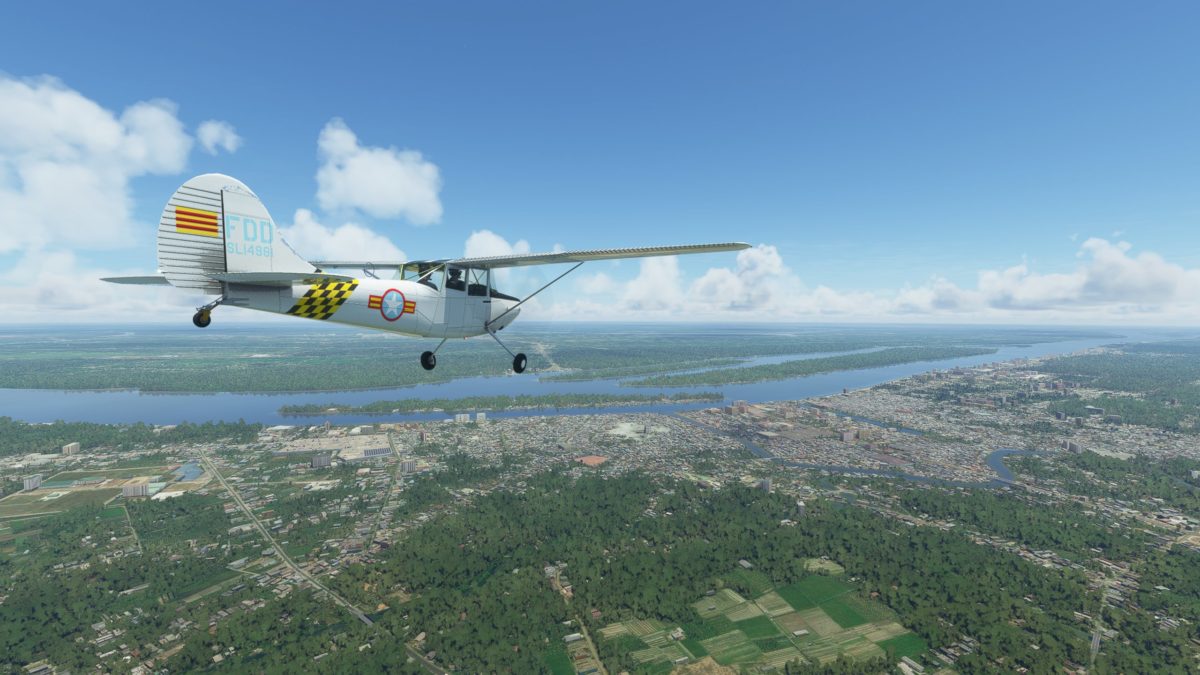
My Tho today has a population of about 225,000, and its colorful waterfront is a popular departure point for day tours of the Mekong River Delta. I went on one in 2001.
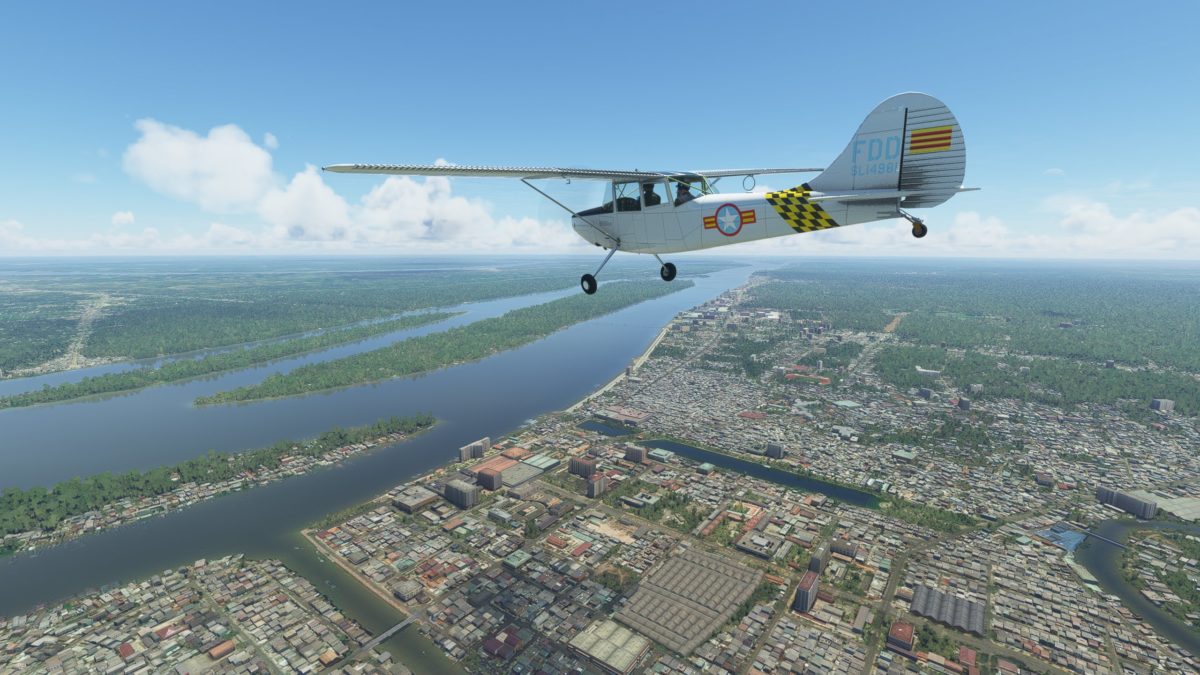
Unlike the highlands and narrow coastline near the DMZ, to the north, the Mekong Delta is flat and hot and penetrated with innumerable waterways perfect for the VC to smuggle supplies and weapons.
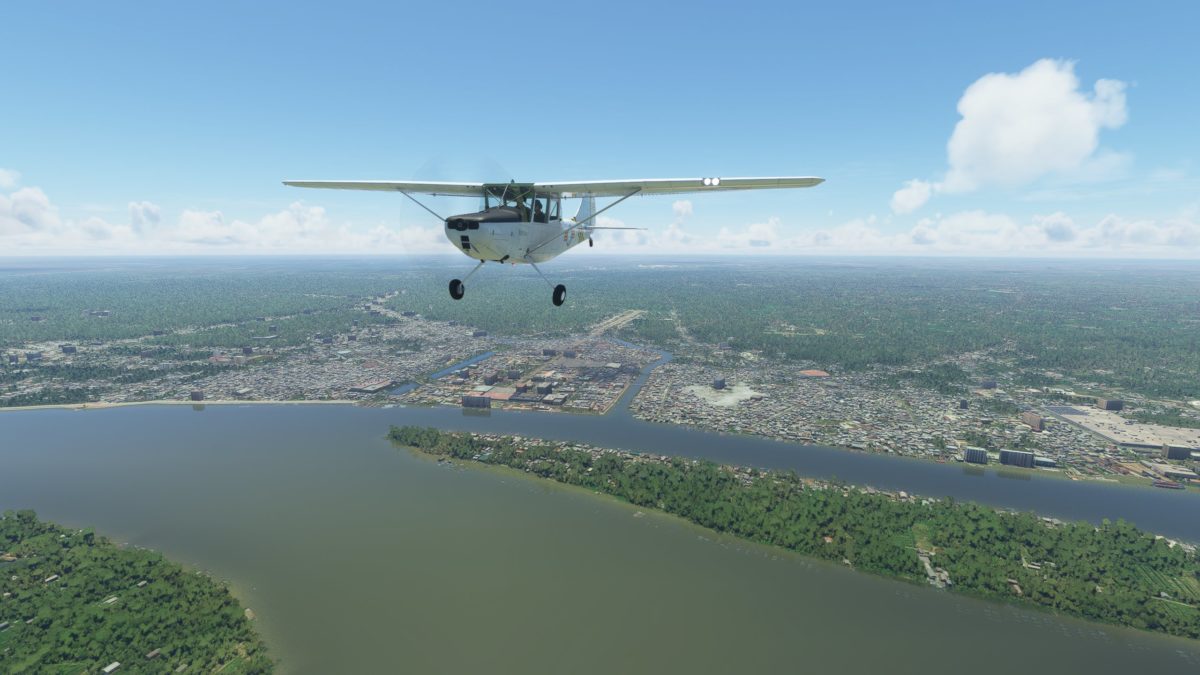
I’m turning right here at Ben Tre, to follow the river upstream. The town was almost entirely destroyed by bombing during the 1968 Tet Offensive.
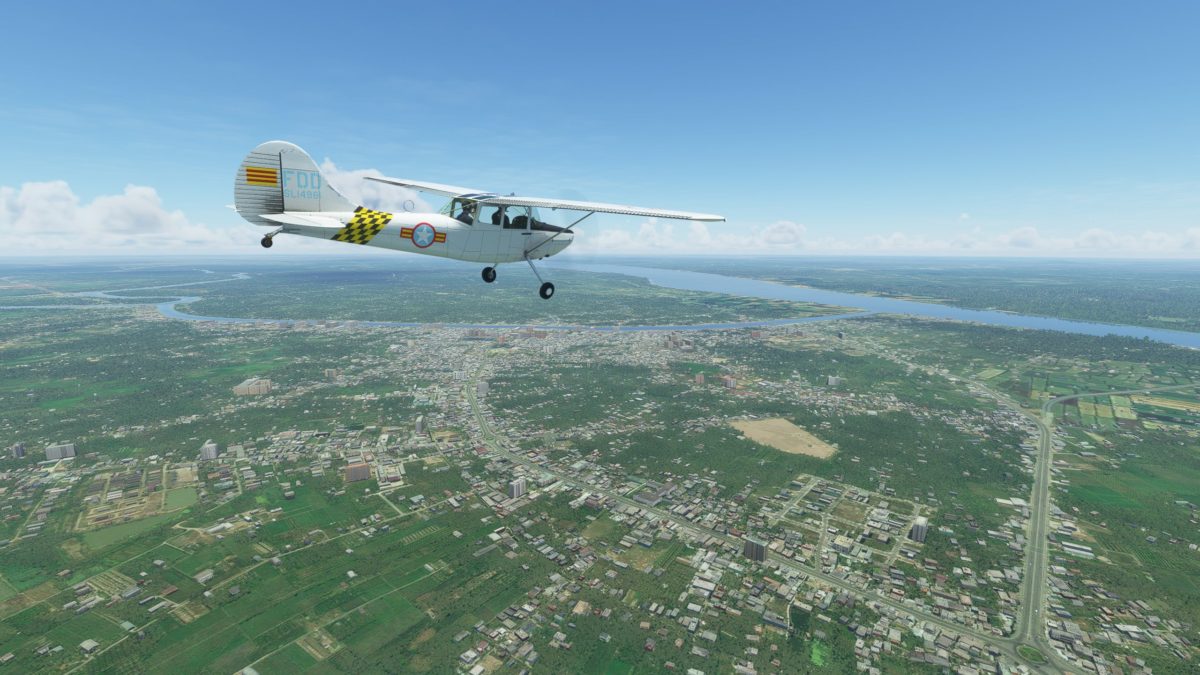
The L-19 (also designated the O-1) was first used during the Korean War. Ed MacMahon, Johnny Carson’s long-time sidekick on the Tonight Show, was a Marine L-19 pilot in Korea.
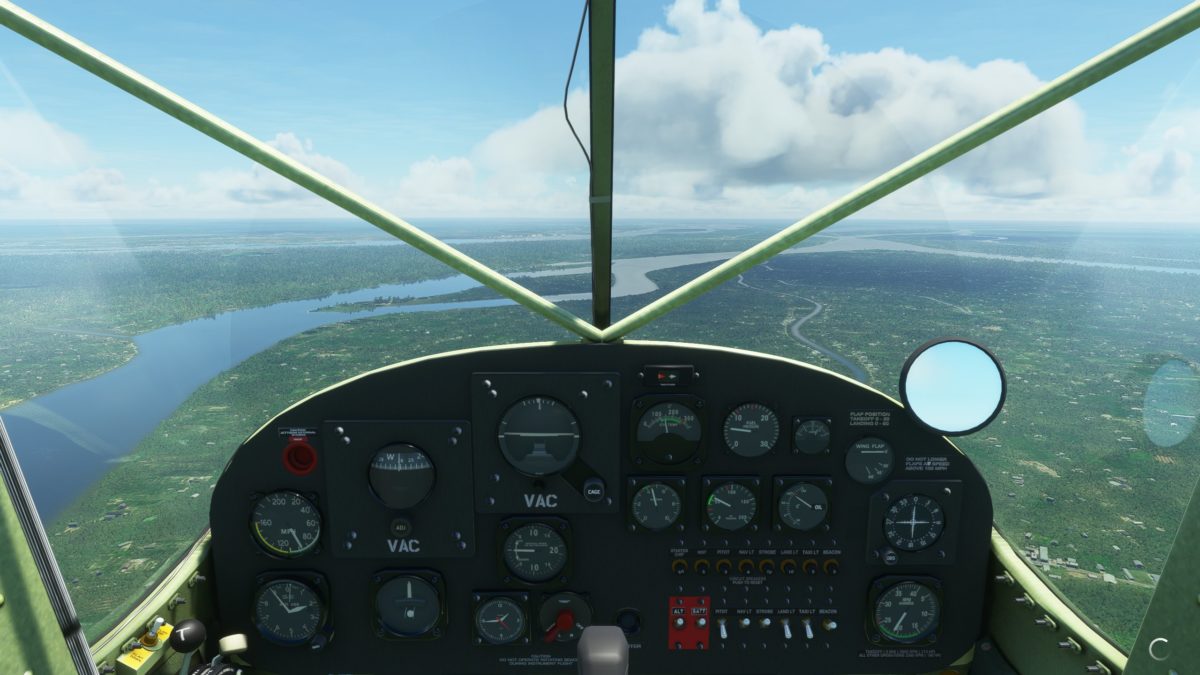
The name “Bird Dog” refers to how a dog helps a hunter spot prey to shoot at.
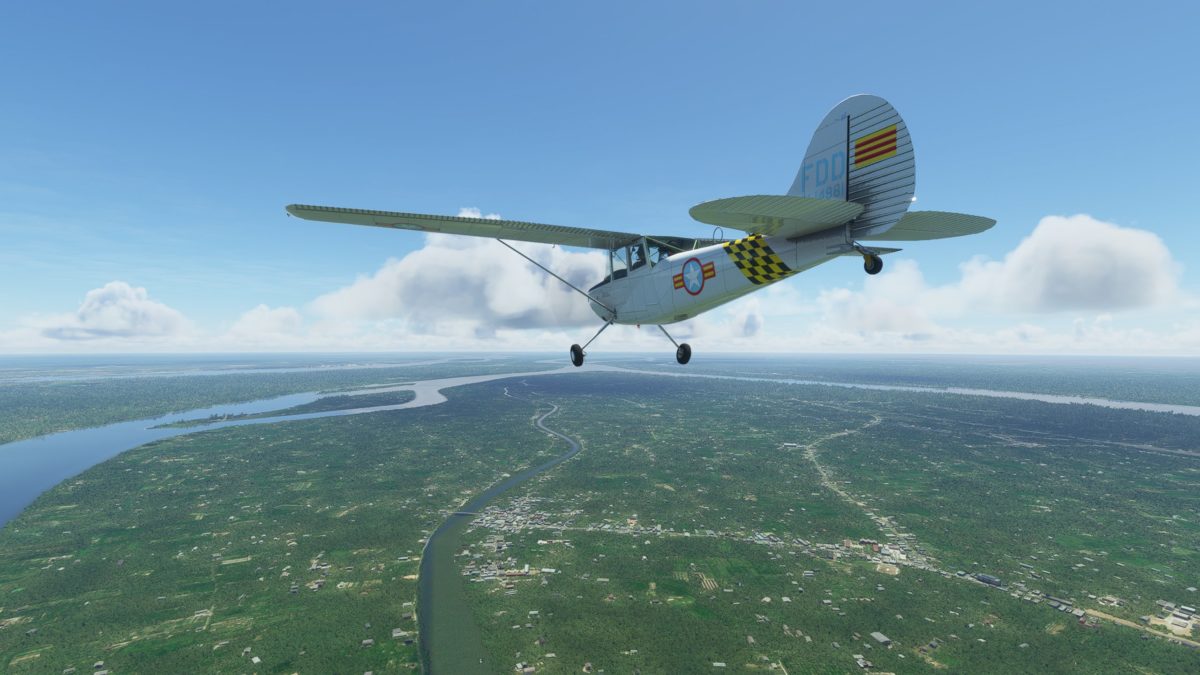
Flying along a low speed and low altitude, the nimble L-19 Bird Dog could not only spot the enemy and call in air strikes or artillery, but call back instructions to shift fire to score more effective hits.
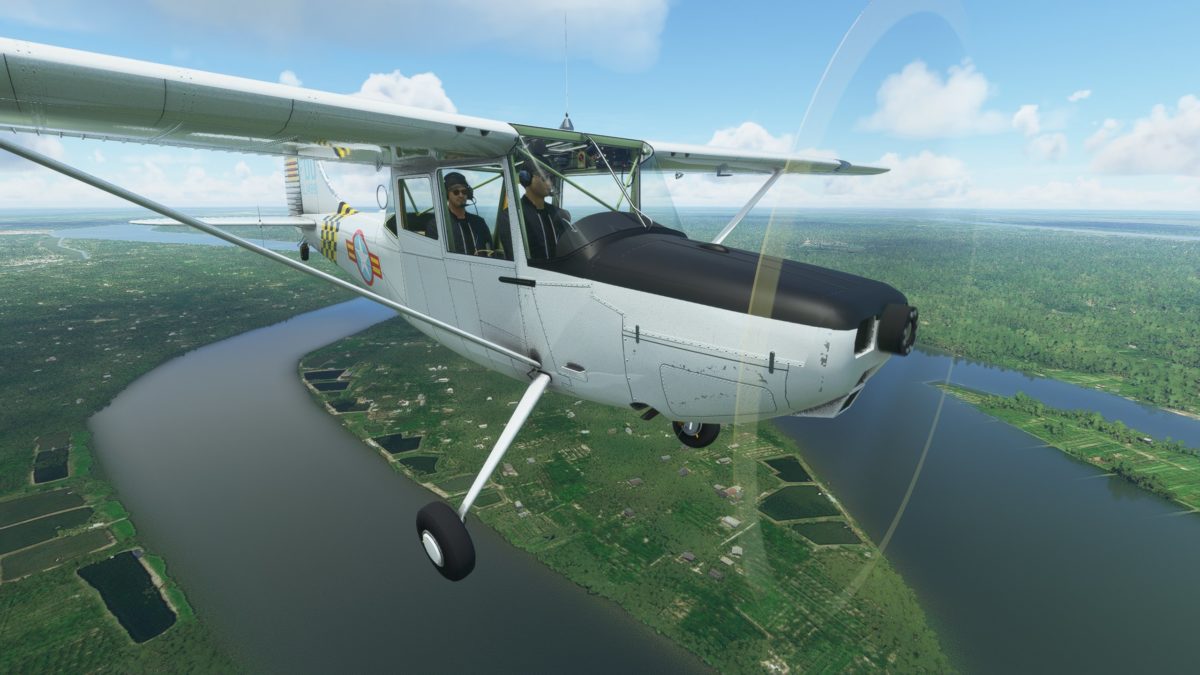
This was a huge force multiplier for troops with limited visibility and perhaps even pinned down on the ground.
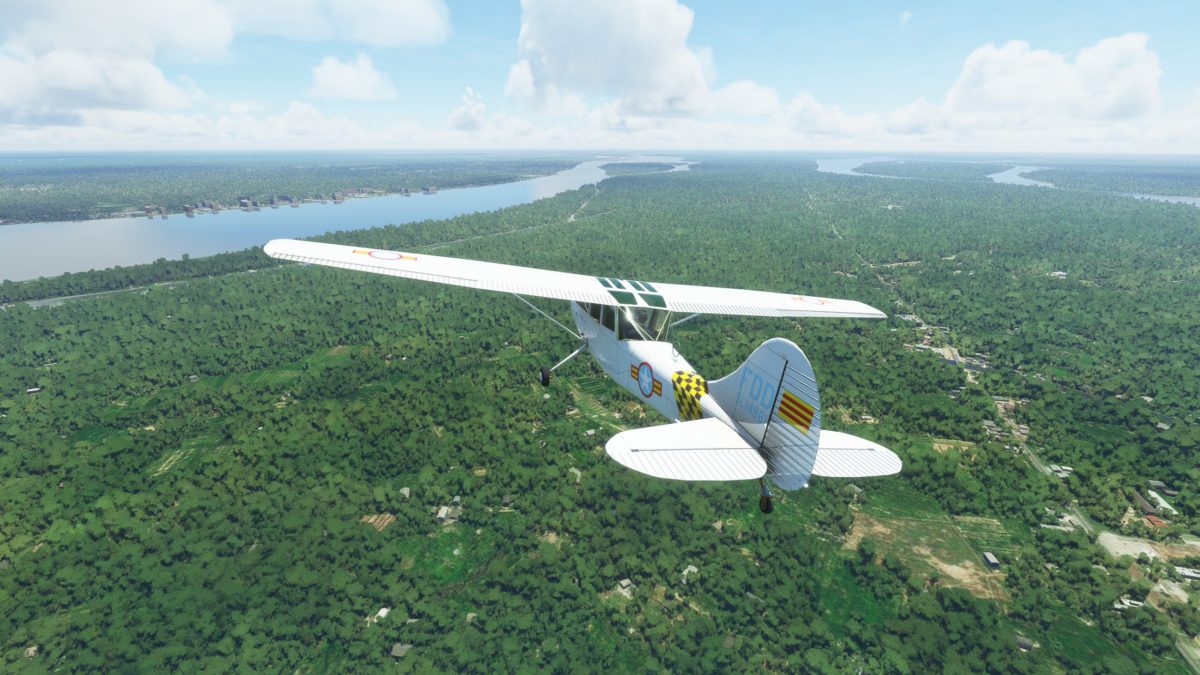
In February 1967, L-19 pilot Hilliard A. Wilbanks, realizing air support wouldn’t get to South Vietnamese troops in time, strafed attacking VC directly with his M-16 from about 100 feet. He was shot down and died, earning the Medal of Honor for his efforts.
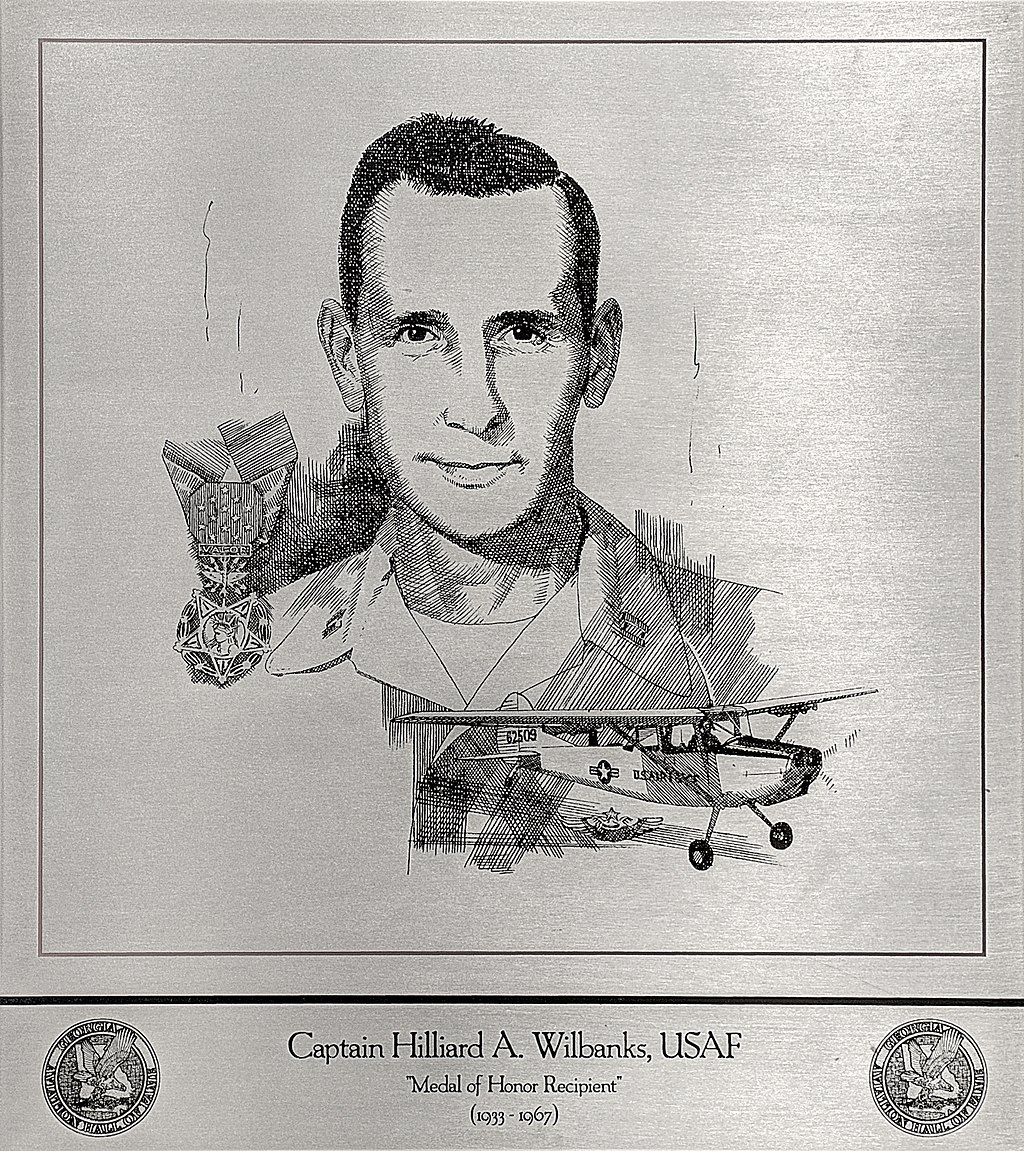
Passing over Vinh Long, another town along the Mekong River Delta, and the capital of a small province.
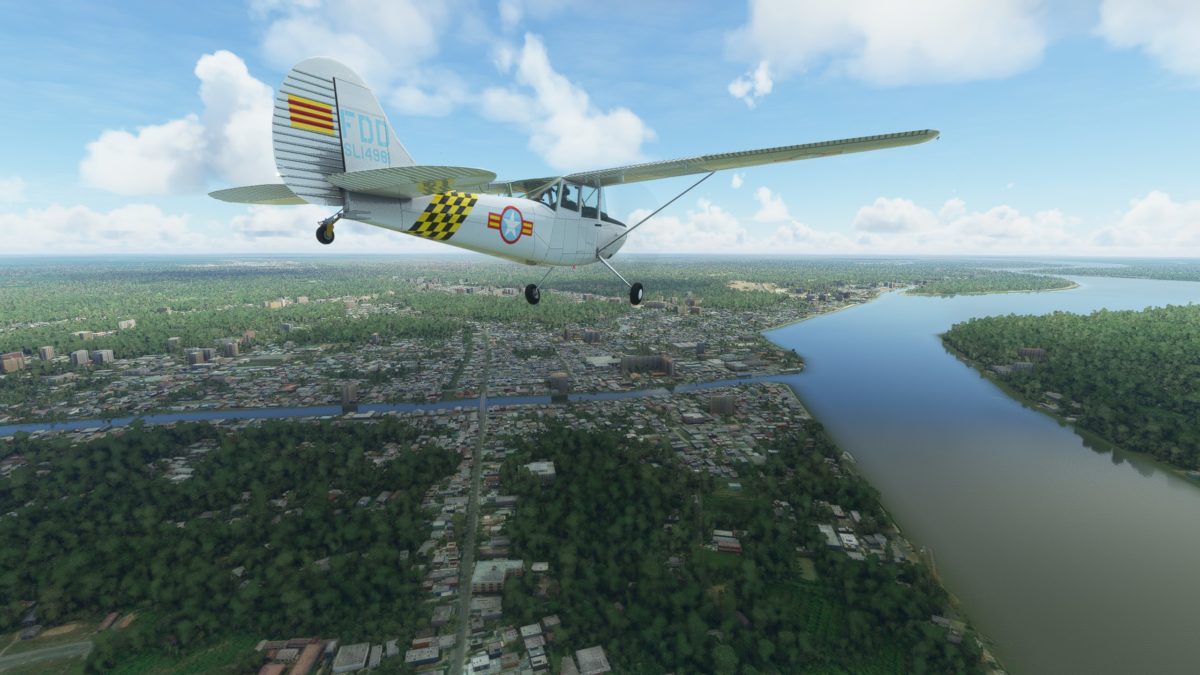
With a plane like this, it’s important to remember to look up and check your fuel gauges, and flip the switch between them when needed. If you forget, you can pretty easily restart the engine in mid-flight, but it will give you a bit of a scare.
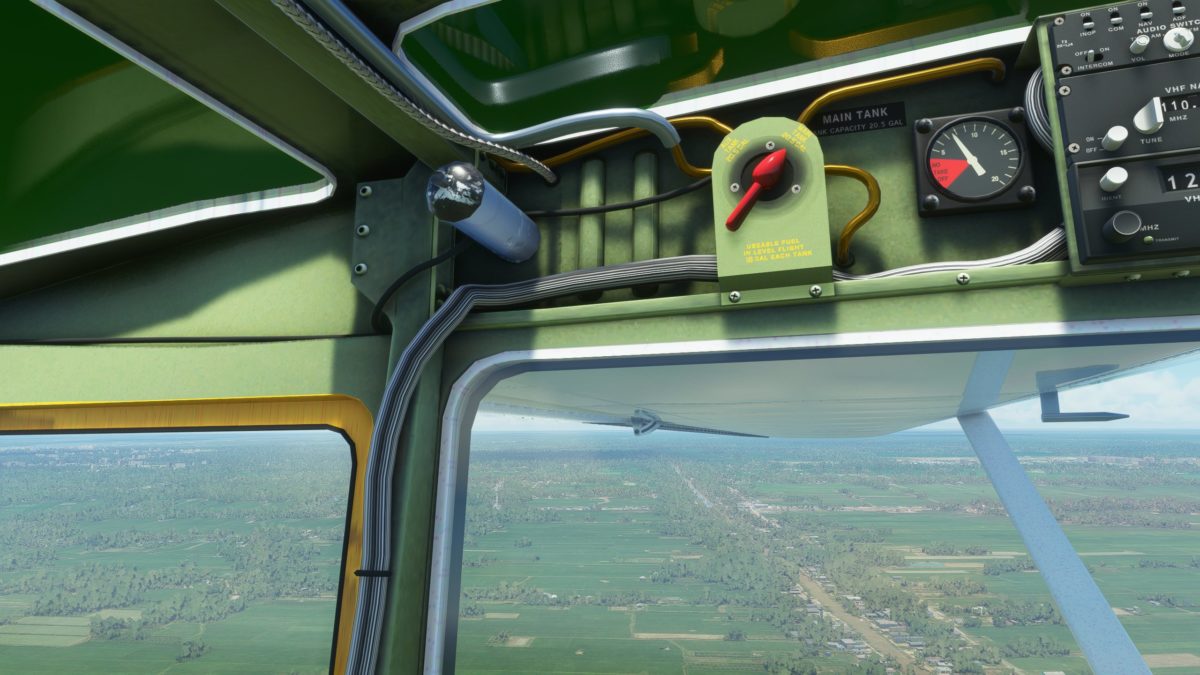
I mentioned that there’s a story about the particular L-19 I’m flying, and it’s one that might resonate today as we watch US troops withdraw from Afghanistan, leaving former allied comrades behind to fend for themselves.
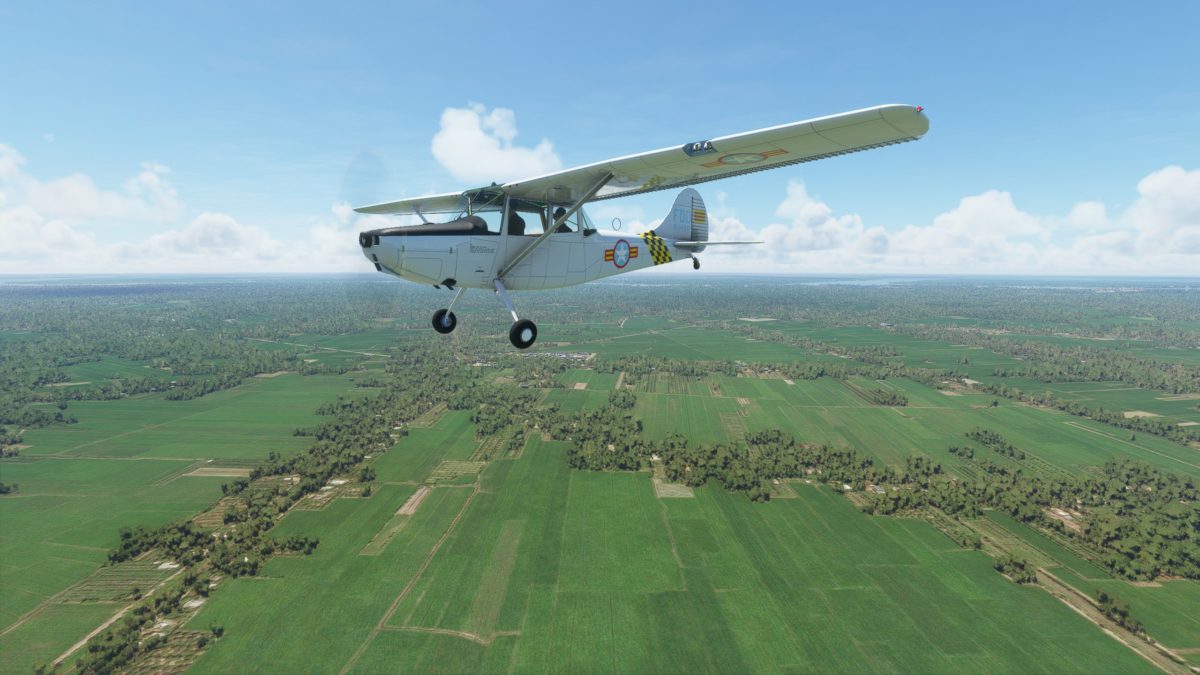
In April 1975, the US had left Vietnam, and North Vietnamese Communist forces were sweeping down to capture Saigon.
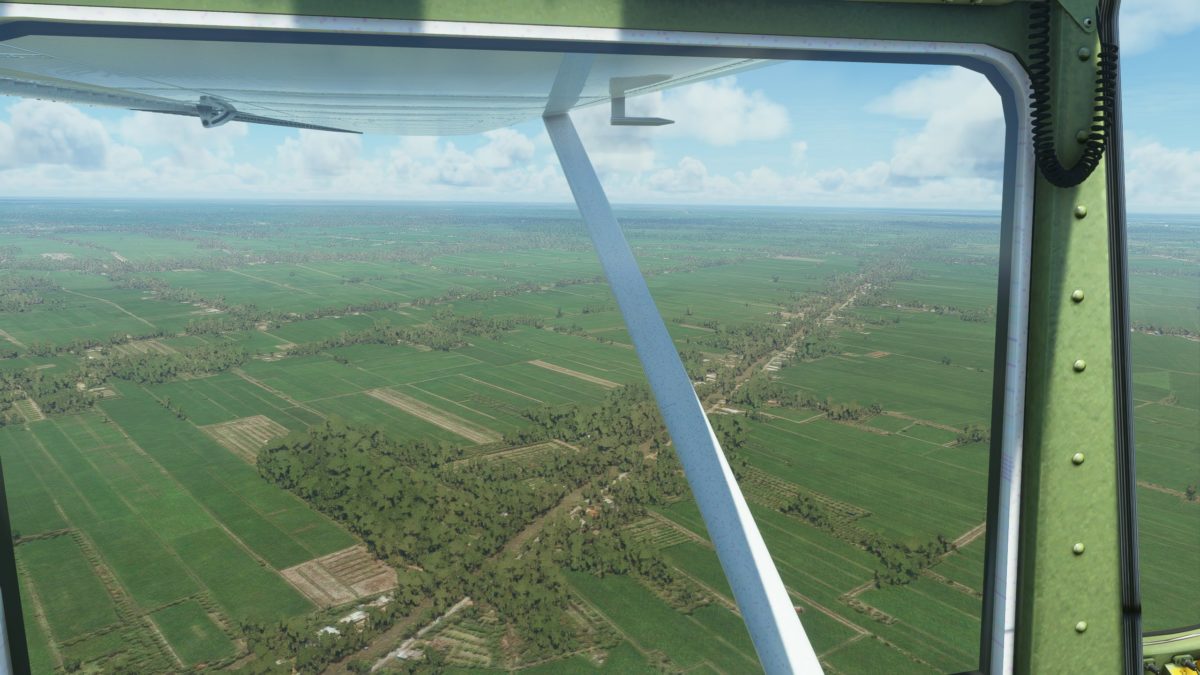
Desperate, South Vietnamese Major Buang-Ly loaded his wife and five children into this exact L-19 (FDD-5L14981) and took off to escape.
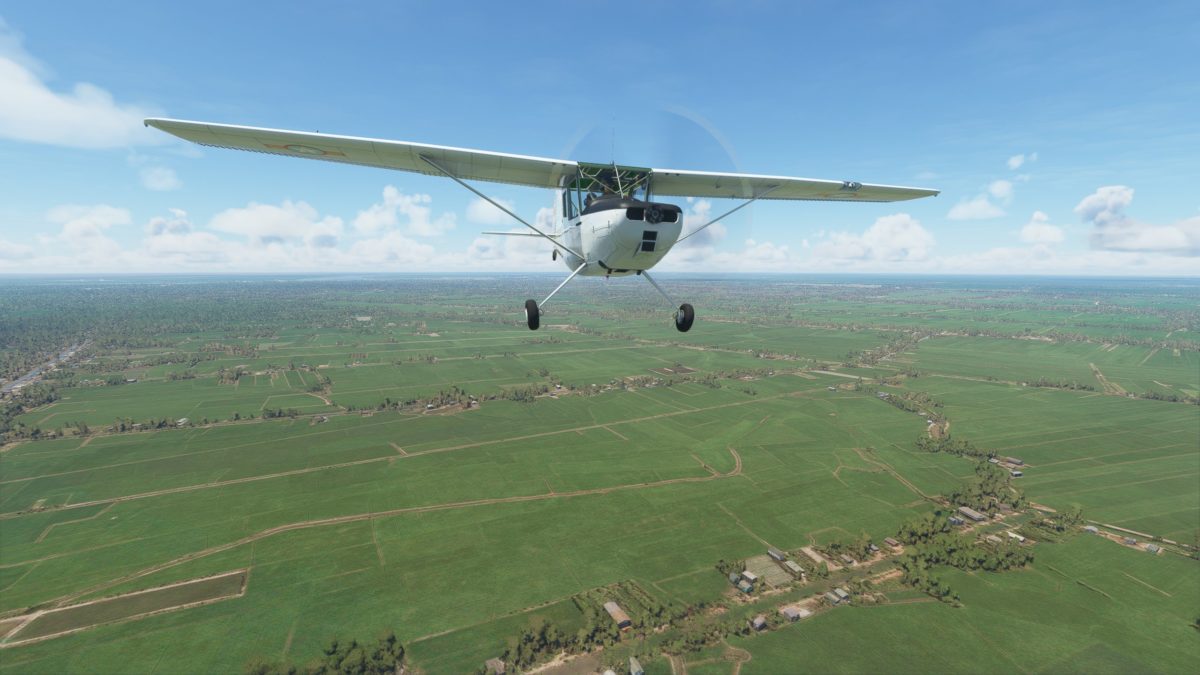
He headed out to sea and found the aircraft carrier USS Midway. With only an hour of fuel left, he dropped a note asking for the flight deck to be cleared so he could land. The admiral ordered South Vietnamese Huey helicopters pushed overboard to make room.
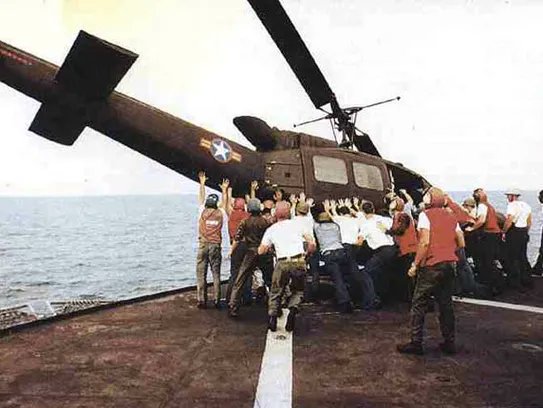
Major Buang-Ly and his family were able to land safely on the USS Midway. Pretty good landing, without an arresting wire – even this modern carrier was only about 1,000 feet long.
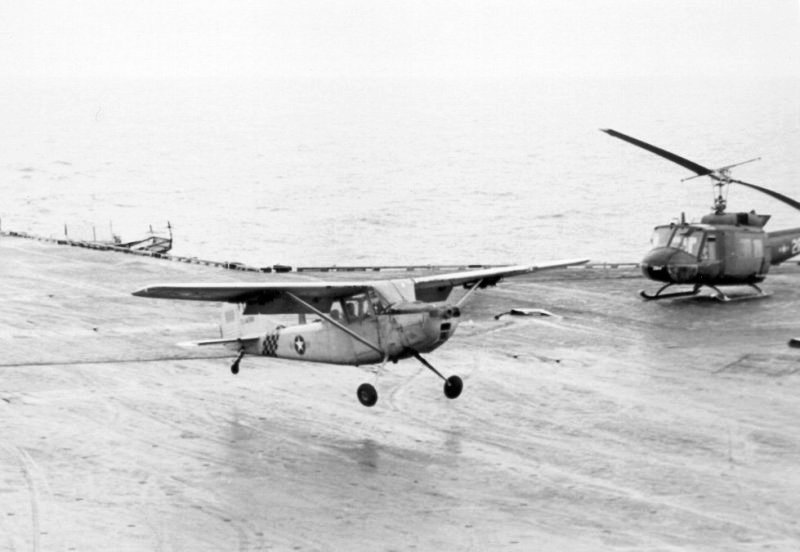
Major Buang-Ly’s L-19 is preserved on display at the National Naval Aviation Museum in Pensacola, Florida, and a replica is displayed in the hangar deck of the USS Midway, now a museum ship in San Diego.
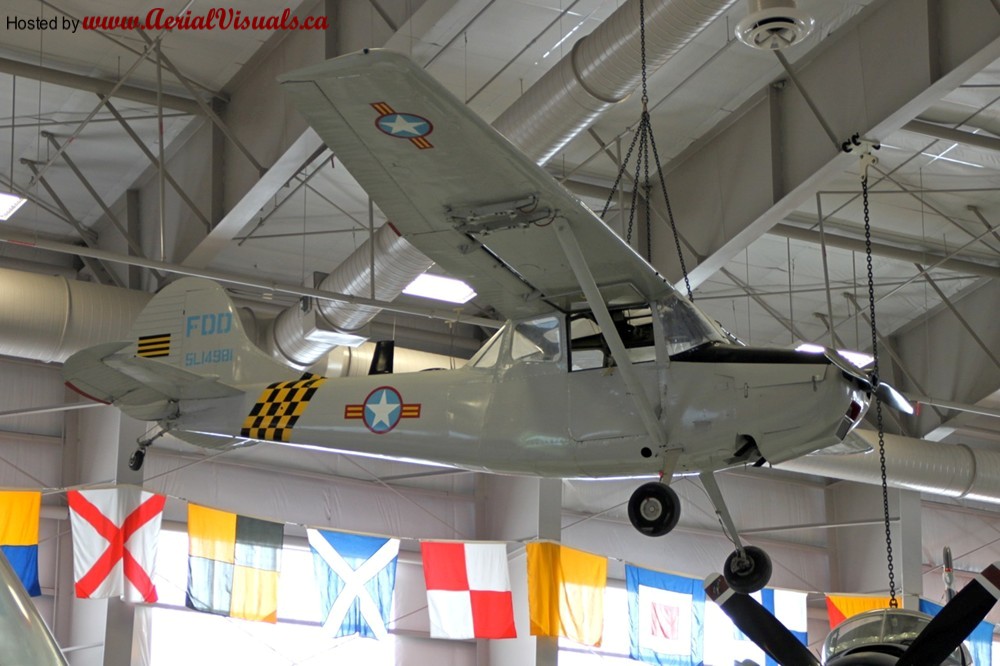
Major Buang-Ly (in the cockpit, far right) and his family became US citizens, and from what I read online, they now live in Florida.
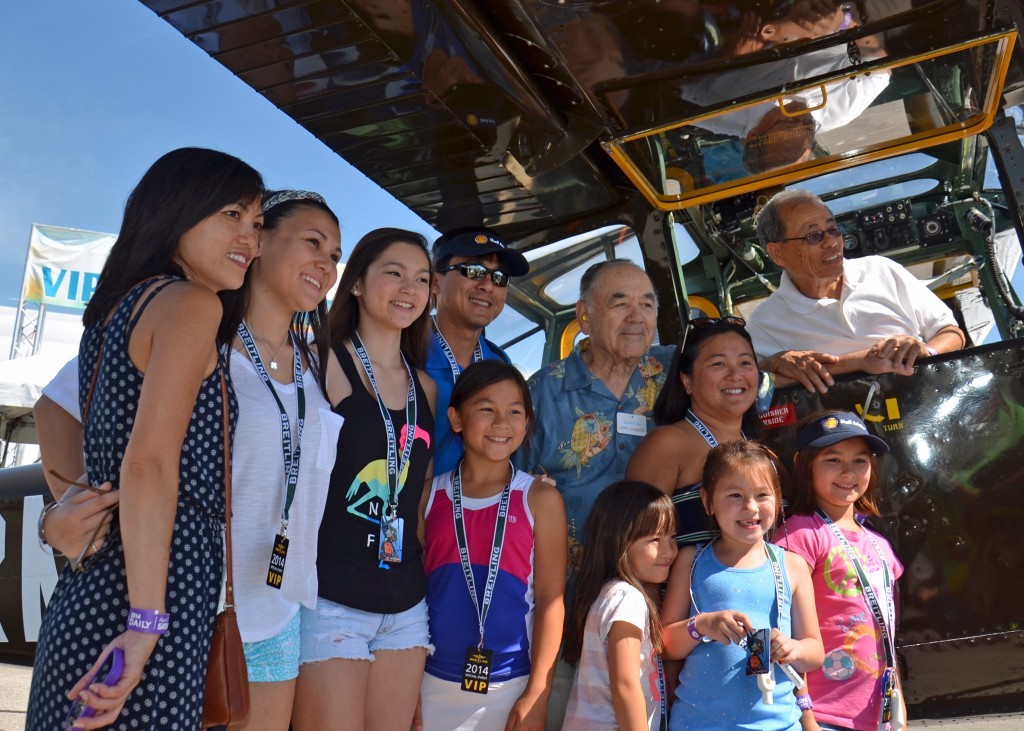
South Vietnamese Major Buang-Ly on his arrival on the USS Midway, in April 1975.
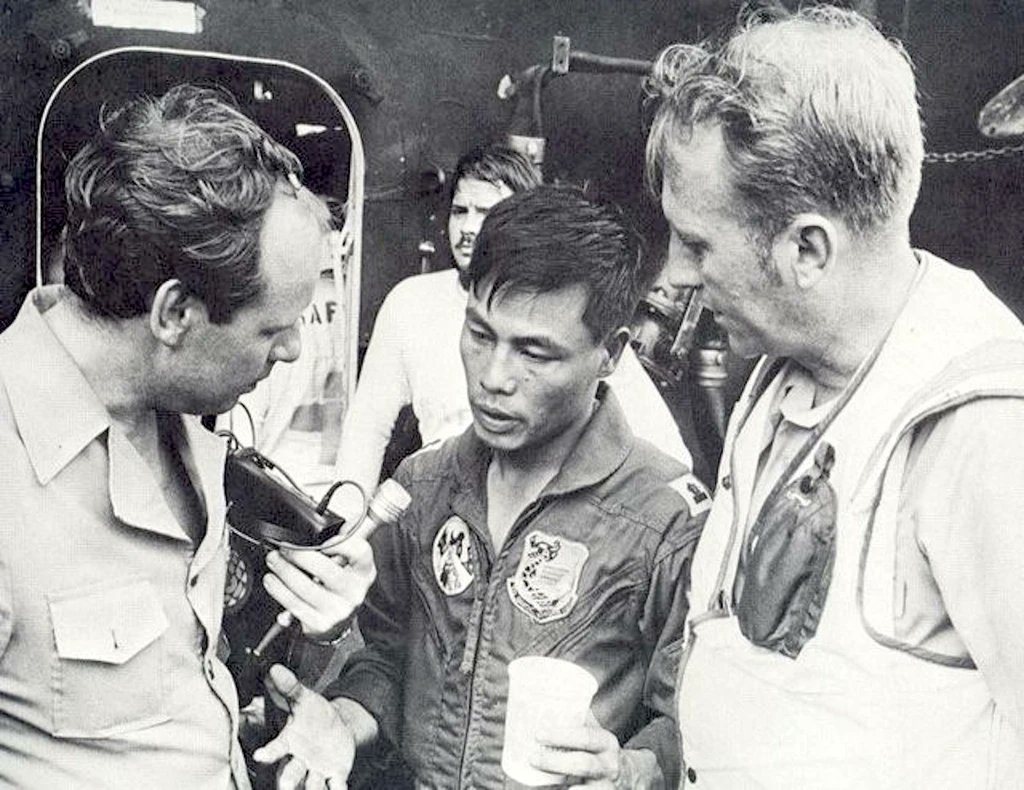
Lawrence Chambers, the admiral who made the decision to throw the Huey helicopters overboard to save Major Buang-Ly and his family, was the 1st African-American to command a US Navy aircraft carrier and the 1st African-American graduate of the Naval Academy to reach flag rank.
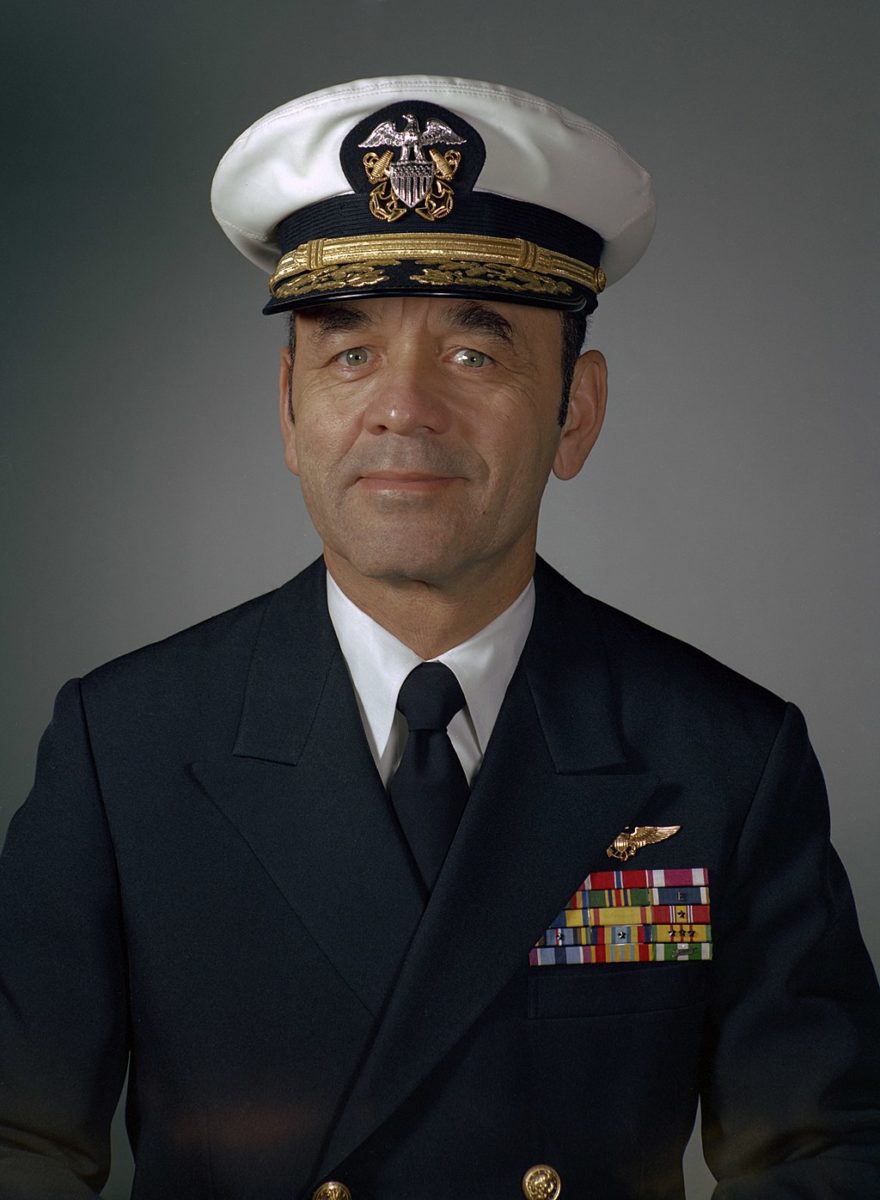
I’ve reached Can Tho in the Mekong Delta, I haven’t located any VC, and it’s time for me to land at the nearby airport at Tra An.
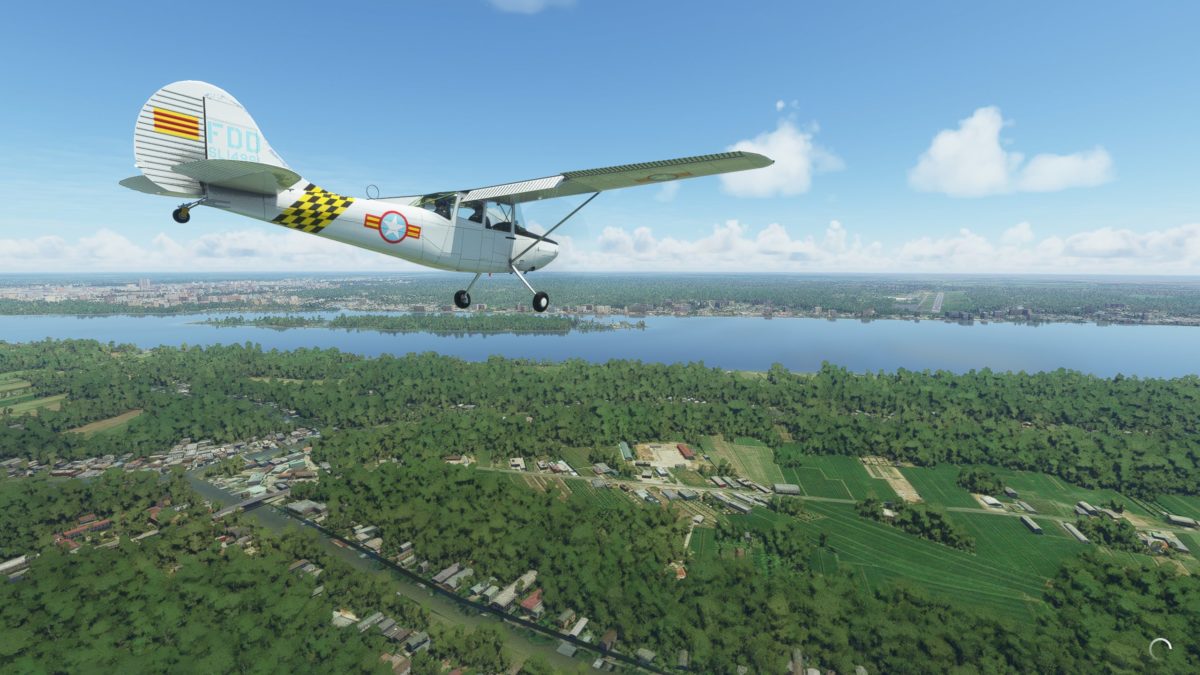
With full flaps, the L-19 stalls at about 50 mph, so I’m keeping my approach around 70. The support bar right in the center makes it a bit tricky to see the runway straight ahead.
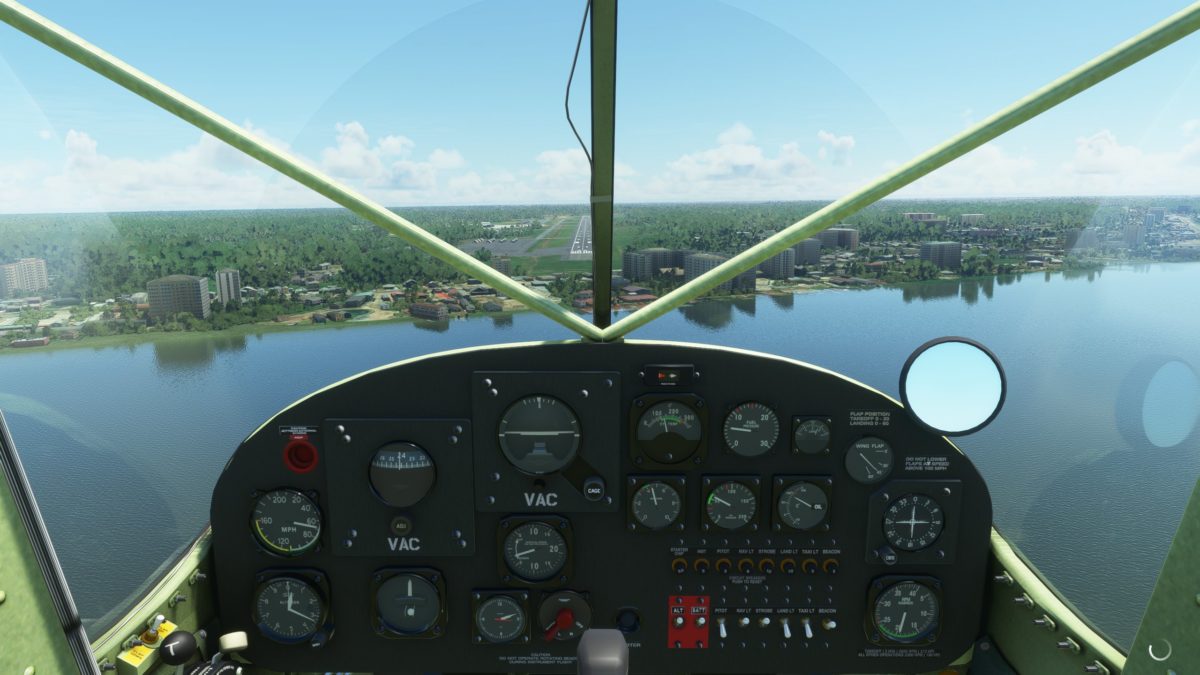
It stalled a bit sooner than I expected and it kind of clunked down onto the runway, but I made it.
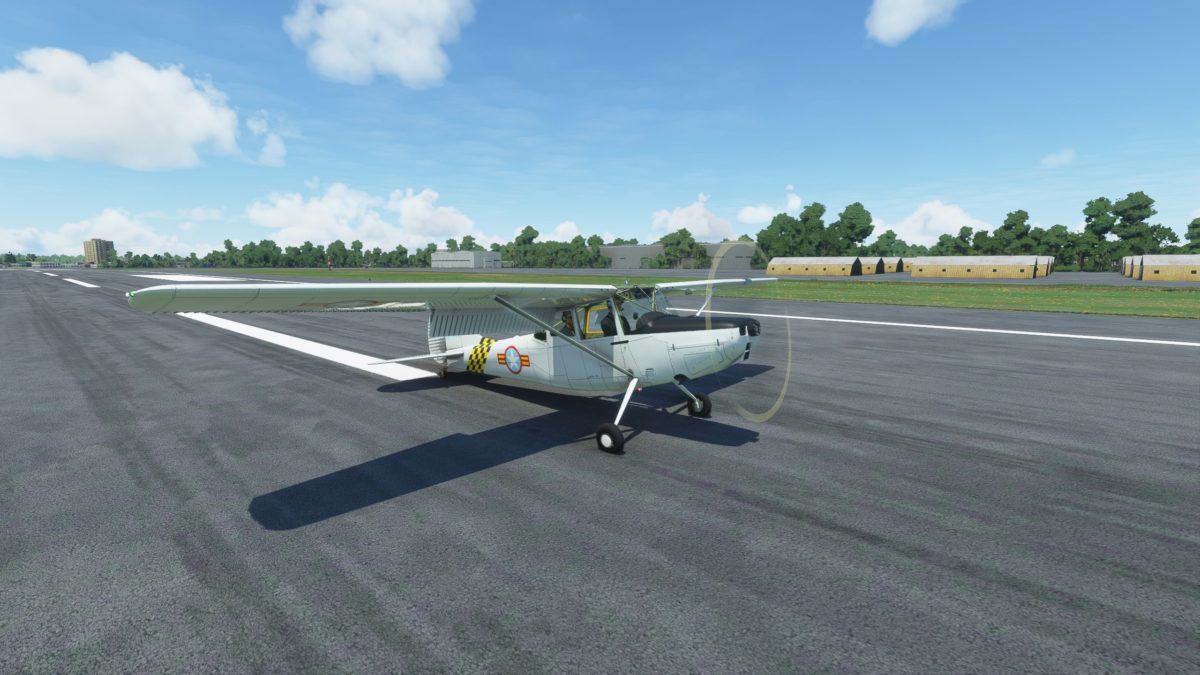
Well, I hope that was some interesting, and perhaps unexpected, background into the Cessna L-19, an airplane that, in a way, is the direct ancestor of the unassuming Cessna 172 most regular people like me learn to fly in.
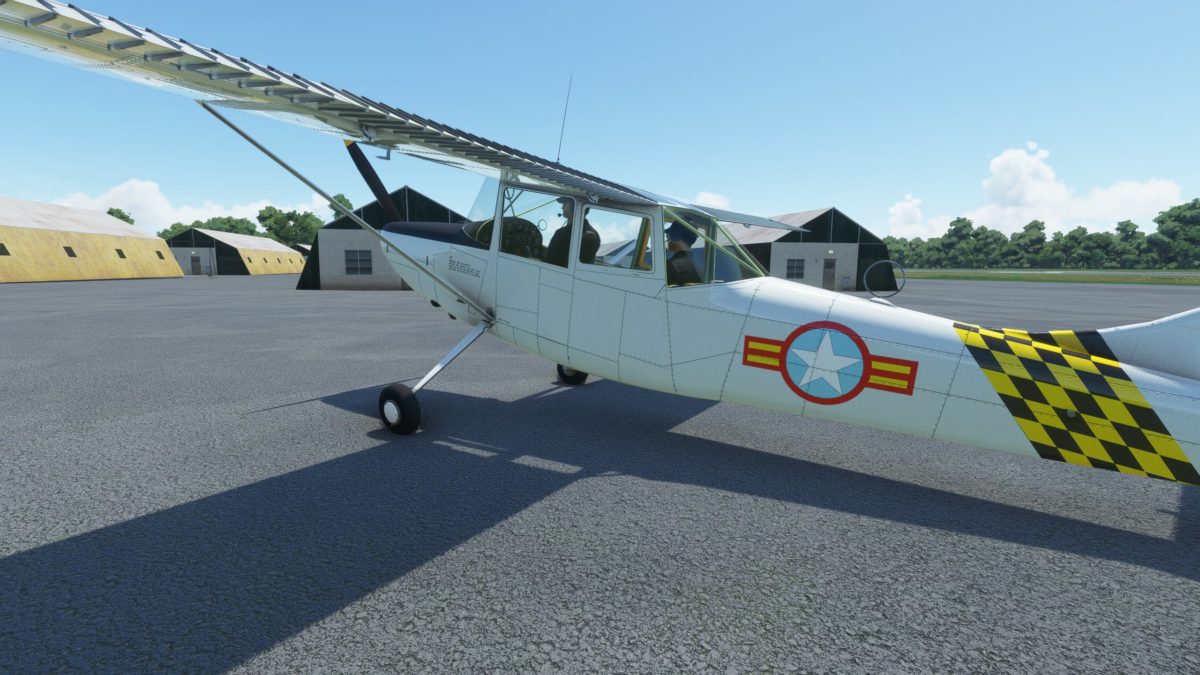
The details of the story are fascinating, and probably answer many of your questions, if you’re interested:
https://www.historynet.com/maj-buang-lys-daring-feat-to-save-his-family.htm
Leave a Reply